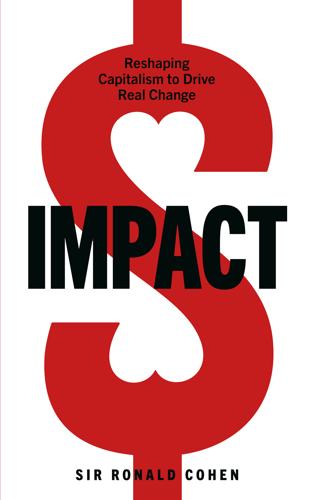
Impact: Reshaping Capitalism to Drive Real Change
by
Ronald Cohen
Published 1 Jul 2020
We must widely replicate the initial breakthrough in the US, where a change in regulation opens the door for trustees of foundations and pension funds to make impact investments. A change in regulation which would allow pension funds to offer savers the opportunity to participate in ESG and impact investing would be profound and it should be our next objective. One option would be for new regulation across the world to mirror the French ‘90/10’ investment programs, with 90 per cent of the money flowing to ESG and 10 per cent of the money going to impact investments. The tipping point for investors will be reached, in my view, when 100 prominent pension funds and foundation endowments allocate to impact investment, across all asset classes, 10 per cent of their portfolios.
…
The fact that impact is already a mainstream subject of conversation promises accelerated progress to an overall tipping point in the adoption of risk–return–impact thinking quite soon, perhaps within the next five years. This view is reinforced by the growing understanding that impact investment is the only way to bring the missing $30 trillion needed to achieve the UN’s SDGs by 2030. Impact Investment to Reach the SDGs As we saw in Chapter 3, there is already a $31 trillion ESG and impact investment pool, equivalent to 15 per cent of global investable assets. The best way of getting this ESG pool to really contribute to the achievement of the SDGs is to convert it into impact investment. To do this, we must be able to measure and compare the contributions to problems and solutions made by different companies.
…
Impact Economy An impact economy is one where measurement of social and environmental impact is integrated in all economic activity; and central to government, business, investment and consumption decisions. Impact Investment Investment that has a strong intention to achieve positive social/environmental outcomes where the outcomes achieved are measured as well as the financial return. Impact investing goes further than ESG investing in two ways: firstly, it aims not just to avoid a negative impact, but also to create a positive one; secondly, it measures the impact it creates. Impact Investment Ecosystem The impact investment ecosystem is composed of five building blocks: suppliers of impact capital, intermediaries, demand for impact capital from social sector organizations and purpose-driven businesses, policy and regulation, and impact market builders such as impact wholesalers, social investment banks and consulting and accounting firms.

The Key Man: The True Story of How the Global Elite Was Duped by a Capitalist Fairy Tale
by
Simon Clark
and
Will Louch
Published 14 Jul 2021
He stood up as the judge addressed him, revealing gray sweat pants. Judge Arbuthnot grappled with the details of the Abraaj case. “Mr. Vettivetpillai is said to have been a managing partner, head of impact investments and member of the global investment committee,” his lawyer said. “Head of what?” the judge asked. “Impact investments,” the lawyer replied. “Impact investments,” the judge repeated, intrigued by what the term might mean. Sev’s lawyer explained that impact investments were supposed to create social and environmental improvements as well as profits and that Abraaj was an expert in the field. Sev was a pillar of his local community and wasn’t involved in any wrongdoing at Abraaj, the lawyer said.
…
locations=PK for shareholders: Milton Friedman, “A Friedman Doctrine—The Social Responsibility of Business Is to Increase Its Profits,” New York Times, September 13, 1970, www.nytimes.com/1970/09/13/archives/a-friedman-doctrine-the-social-responsibility-of-business-is-to.html “a new alternative”: Nick O’Donohoe, Christina Leijonhufvud, and Yasemin Saltuk, “Impact Investments: An Emerging Asset Class,” JP Morgan Global Research, November 29, 2010, thegiin.org/assets/documents/Impact%20Investments%20an%20Emerging%20Asset%20Class2.pdf Sir Ronald Cohen: Catholic Relief Services, “2018 Impact Investing—Welcoming Remarks,” published on September 6, 2018, YouTube video, https://www.youtube.com/watch?v=cerAZXusft0 Turkson saw impact investing: Simon Clark interviewed Cardinal Turkson about impact investing in Vatican City in December 2018. blue sweater: Jacqueline Novogratz, The Blue Sweater: Bridging the Gap Between Rich and Poor in an Interconnected World, Penguin Random House, 2010.
…
“Following our discussions, we are now describing the work as impact investing,” he wrote. “The word impact implicitly captures the revolutionary spirit that surfaced in Bellagio.” For Ion Yadigaroglu, the term impact investing signaled the start of a new way of doing business. He represented the Canadian billionaire Jeff Skoll at the meeting. “Our selecting this phrase in October of 2007 led directly to the founding of an effort to make a movement out of it,” he said. But there was a crucial absence from the meeting. No poor people attended. This became a constant source of irony at such gatherings. Impact investing was largely a movement made up of rich people talking to other rich people about what they could do for poor people.
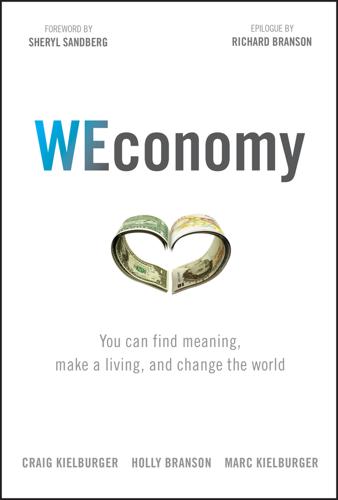
WEconomy: You Can Find Meaning, Make a Living, and Change the World
by
Craig Kielburger
,
Holly Branson
,
Marc Kielburger
,
Sir Richard Branson
and
Sheryl Sandberg
Published 7 Mar 2018
A New Global Carbon Agreement for International Aviation—It's a Massive Deal, in More Ways Than One Low-Carbon Jet Fuels: Pipe Dream or Reality? It's Not ALL about Carbon . . . Manage Your Supply Chain Chapter 10: Unlock New Customers Purpose Unlocks New Customers. Chapter 11: The New World of Impact Investing So What Is It? mOm Incubators: Virgin's First Official Impact Investment Impact Investing: The Future Is Now Chapter 12: Open New Markets Social Entrepreneur Seeks Investors17 A Market-Based Response to a Life or Death Crisis Notes Chapter 13: People are Your Purpose Who Are Your People? The Biggest Workforce in the World Dispelling the Millennial Myths The Job Hunt B Team Purpose Statement Here Are a Few More Things We Do to Make Sure Our Team Is Part of a Community Daydreaming about a Holiday at Your Desk?
…
Each investment will have its own areas of impact, which need to be measured, but ideally, each will be put into context and measured against other impact investments. Can we find a set of common measures to help gauge the quality of the impact? These are questions that need to be addressed during the due diligence of the business, in addition to the typical questions that should be asked for any investment—including reputational risks, which cannot be ignored, even with impact investments. And finally, the biggy: as an investor, you will also need to decide whether you accept lower financial returns to support higher impact returns. If so, what is the trade-off you are ready to accept? Given these hurdles, impact investing is sometimes still viewed with cynicism in boardrooms.
…
We have always entered markets from the point of view of positive impact and the value we would bring to our consumers. This was simply a more formalized way of approaching future business investments. If our initial impact investments proved successful, there is no reason we couldn't move all of our interests to impact investments in the future. Thankfully, I wasn't met with blank stares or shaking heads, but rather with real interest and a sensible desire to find out more. A steering group was immediately formed to consider how impact investing might be adopted by Virgin Management. “I've been a long-term proponent of the view that any of society's problems that can be solved with market-based solutions must be solved that way.”

No Such Thing as a Free Gift: The Gates Foundation and the Price of Philanthropy
by
Linsey McGoey
Published 14 Apr 2015
In other words, microfinance is working. Just not for the poor.29 Another example of a trend widely hailed for alleviating poverty is impact investing. This is the idea that individuals can earn market-rate financial returns for investing in projects geared at providing environmental and social benefits. In 2010, wild estimates of the financial potential for investors started to appear – a report from JPMorgan, the Rockefeller Foundation, and the Global Impact Investing Network predicted that the profits could range from $183 billion to $667 billion. Investors flocked to the field. Since then, the field has faced a reality check.
…
The experience of the Acumen Fund, a non-profit group that funds market-based solutions to development challenges, illustrates this problem. After considering 5,000 potential companies over ten years, it invested in just sixty-five of them. Advocates of impact investing admit that investors are wary of putting their money on the line when the financial pay-off is uncertain. Because of the reluctance, one report suggests, ‘Truly realizing the impact in impact investing will require more, not less, philanthropy’.30 This last comment points to something curious about the recent hype for ‘market-based’ initiatives in global health and development. Often, these initiatives are not actually market-based at all.
…
For more on Roodman’s measured views on microfinance, see Roodman, Due Diligence. Another compelling analysis is Ananya Roy’s Poverty Capital: Microfinance and the Making of Development (London: Routledge, 2010). 29Emerson and Bugg-Levine’s comment is from an interview with Alex Goldmark, ‘Social Impact Investing’, 20 October 2011. 30Harvey Koh, Ashish Karamchandani and Robert Katz, ‘From Blueprint to Scale: The Case for Philanthropy in Impact Investing’, Monitor Group report (April 2012), 10. 31See ‘Safaricom: Managing Risk in a Frontier Capital Market’, at fletcher. tufts.edu; the figures on Gates Foundation grants are drawn from the foundation’s Form 990 reports, publicly available on its website. 32Koh et al., ‘From Blueprint to Scale’, 16. 33Eleanor Whitehead, ‘Africa: Aiding Business’, All Africa, 5 January 2012; my discussion in this section is drawn from Linsey McGoey, ‘The Philanthropic State: Market-State Hybrids in the Philanthrocapitalist Turn’, Third World Quarterly, vol. 35, no. 1 (2014), 109–25.

Green Swans: The Coming Boom in Regenerative Capitalism
by
John Elkington
Published 6 Apr 2020
In addition to publishing data on its impacts, both positive and negative, Novartis is openly sharing its evolving impact valuation methodology through detailed case studies. That’s a huge boost for the entire field. But the biggest story of all in this space has been that of the rise of impact investing. As the Lexicon puts it, “The term ‘impact investing’ is used informally by many in the investment community but there is increasing demand from investors to develop a global standard as set out by the Global Impact Investing Network, or GIIN. Impact investing is generally accepted to describe investing that intentionally seeks measurable social and environmental benefits. It differs from socially responsible investing which traditionally avoids investments that are inconsistent with the values of the investors, such as tobacco and arms, or investments that might be associated with poor labor rights.”
…
IMPACT WITH GREEN SWAN CHARACTERISTICS We are getting better at measuring and valuing the negative impacts created by our businesses, markets, and economies. But we still struggle to master the task of predicting and valuing the positive impacts associated with Green Swan trajectories. This is a core challenge, among others, for the rapidly expanding impact investment sector. It also now needs to push even more forcefully into the investment mainstream. Currently worth around $500 billion, impact investment could reach over $25 trillion if it mainstreams properly.37 7. LIABILITY Oh, to be a lawyer. Liability comes in an almost infinite array of forms, all of them potential sources of sumptuous legal fees. But groups such as Client Earth are paving the way for very different liability regimes by suing on behalf of the planet and those most dependent on its health.38 What might happen, for example, if the fossil fuels industry were to be taken to court en masse for the untold damage it has helped cause to the climate?
…
It helped inspire and was followed by Double and Quadruple Bottom Lines; Social Return on Investment; multiple capital models; Full Cost Accounting; ESG (a framework focusing investors and financial analysts on Environmental, Social, and Governance factors); the Environmental Profit & Loss approach pioneered by Trucost, Puma, and Kering; Net Positive; Blended and Shared Value; Integrated Reporting; Impact Investment; and a range of proprietary versions, including consultancy BCG’s Total Societal Impact framework. That’s even before we get into next-generation concepts like Carbon Productivity, the Sharing Economy, the Circular Economy, and Biomimicry. Such experimentation is clearly essential and can spur a proliferation of potential solutions.

Investing to Save the Planet: How Your Money Can Make a Difference
by
Alice Ross
Published 19 Nov 2020
There is crowdfunding – probably closest to angel investing in spirit – where people with new ideas can raise money on a website. There’s charitable giving or philanthropy, which is certainly a crucial tool in combating climate change but not strictly speaking an investment. Then there’s impact investment, a newer area whereby funds or projects try to measure their impact. Impact investment spans a broad area that can include philanthropy, investing for a below-market return, or investing for a normal return. We’ll see some examples of this later in the book, but it won’t be a primary focus. As we discuss investment themes in the following chapters, we’ll look at different ways of investing in them that will include the asset classes we’ve looked at here, whether equities, bonds, private equity or venture capital.
…
Younger members of wealthy families tend to be particularly keen on environmental investments, and many are bridging the gap between the traditional philanthropy that wealthy families engage in and investing to achieve certain solutions. This is often in the form of impact investment – a term that has become very trendy in recent years in investment circles. Impact investments typically aim at some sort of social good – be it solutions to climate change, improving poverty, or female education. The impact achieved is supposed to be measurable, and investment returns may only be paid out if certain goals are met. Some impact investors are willing to potentially lose all their money, others are happy to receive a return below what they’d get elsewhere, while others aim to get just as good a return as they would in a normal investment.
…
Another of Proterra’s investors is Al Gore and David Blood’s Generation Investment Management. Obvious was also an early backer of Beyond Meat, owning 9 per cent of the company when it floated on the stock market in 2019, paying its original investors huge returns. Gabe Kleinman, head of portfolio services and marketing at Obvious, says that they don’t like to use the term ‘impact investing’, as that can be associated with charity or doing good as opposed to superior investment returns. Instead, he says, ‘We are investing in companies that are reimagining trillion-dollar sectors in the economy and we believe they will outperform their peers.’ He says that in 2014, when Obvious was founded, it was unusual for a venture capitalist to stress that it was trying to do good as well as make money.
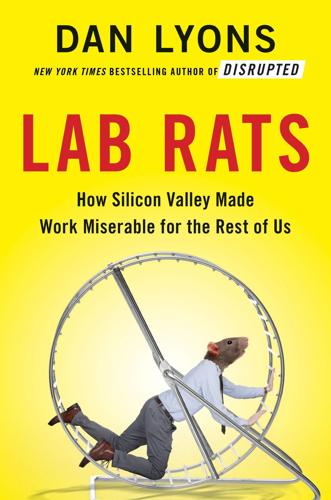
Lab Rats: How Silicon Valley Made Work Miserable for the Rest of Us
by
Dan Lyons
Published 22 Oct 2018
Nevertheless, a lot of investors are getting on board, apparently agreeing with Mitch and Freada Kapor that investor money can be used to drive good behavior. A decade ago, when the Rockefeller Foundation coined the term impact investing to describe a business model that would generate both a financial return and a social or environmental impact, the idea seemed a little nuts. But today there are so many impact investors that there’s also an organization to track them, called the Global Impact Investing Network, and even more remarkable, GIIN claims to have twenty thousand members. The spiritual ancestor of impact investing is Grameen Bank, a microfinance organization founded in 1983 in Bangladesh by Muhammad Yunus, who was awarded a Nobel Peace Prize in 2006.
…
By setting up shop here in Oakland, Mitch Kapor and Freada Kapor Klein, the husband-and-wife team behind Kapor Capital, were sending a message—they were not part of that other world. Unlike those big venture capital firms over on Sand Hill Road, the Kapors are not trying to make as much money as possible by any means necessary. Instead, they have a social mission. Some call it impact investing. Or diversity-focused investing. Or mission-driven versus money-driven investing. The Kapors call their model “gap-closing investing,” meaning they will only invest in companies that are “serving low-income communities and/or communities of color to close gaps of access, opportunity, or outcome,” Freada says.
…
After graduation she founded an organization to combat sexual harassment in the workplace, wrote articles for a newsletter called Feminist Alliance Against Rape, and got a PhD in social policy and research from Brandeis. As Freada told an interviewer in 2018: “Diversity is all that’s ever mattered to me, for all the decades of my professional life.” The Rise of “Impact Investing” In a way what’s happening to Oakland is a metaphor for what the Kapors are hoping to do with the tech industry. Over the past ten or twenty years the industry has gone off the rails. The smash-and-grab, get-rich-quick, screw-the-workers business model has become deeply entrenched. That model has created a dysfunctional workplace culture where women are excluded or harassed, where “bros hire bros,” where employees are treated poorly, and where people of color are unwelcome.

The Alternative: How to Build a Just Economy
by
Nick Romeo
Published 15 Jan 2024
Mosaic Capital Partner, “Employee Ownership Buyout,” January 23, 2020, https://www.mosaic-cp.com/employee-ownership-buyout/. 17. Project Equity, “The Silver Tsunami of Retiring Business Owners,” accessed December 27, 2022, https://project-equity.org/communities/small-business-closure-crisis/. 18. Global Impact Investing Network, “What You Need to Know About Impact Investing,” accessed December 27, 2022, https://thegiin.org/impact-investing/need-to-know/. 19. National Center for Education Statistics, “Endowments” (chart), FY 2020, Fast Facts, accessed December 27, 2022, https://nces.ed.gov/fastfacts/display.asp?id=73#:~:text=How%20large%20are%20the %20endowments,the%20total%20was%20%24675%20billion. 20.
…
Sarah O’Brien, “While Many Investors Want a Portfolio with a Purpose, Not All Put Their Money Where Their Mouth Is, Survey Finds,” CNBC, August 2, 2021, https://www.cnbc.com/2021/08/02/not-all-investors-who-say-they-support-impact-investing-are-doing-it.html. 21. Fidelity Charitable, Using Dollars for Change, 2021, https://www.fidelitycharitable.org/content/dam/fc-public/docs/insights/impact-investing-using-dollars-for-change.pdf. 22. Colorado Office of Economic Development and International Trade, “Employee Ownership Tax Credit,” accessed December 27, 2022, https://oedit.colorado.gov/employee-ownership-tax-credit#:~:text=In%20June %202021%2C%20Governor%20Polis,accessible%20for%20businesses %20throughout%20Colorado. 23.
…
World Economic Forum, “What’s the Price of a Green Economy? An Extra $3.5 Trillion a Year,” accessed December 28, 2022, https://www.weforum.org/agenda/2022/01/net-zero-cost-3-5-trillion-a-year/. 39. “Investing for Impact: The Global Impact Investing Market 2020,” https://www.ifc.org/wps/wcm/connect/Publications_EXT_Content/IFC_External_Publication_Site/Publications_Listing_Page/impact-investing-market-2020. 40. Kristie Pladson, “Davos: Green Transition Is ‘$50-Trillion Opportunity,’” Deutsche Welle, January 28, 2021, https://www.dw.com/en/davos-green-transition-is-50-trillion-investment-opportunity/a-56375018. 41.

AI Superpowers: China, Silicon Valley, and the New World Order
by
Kai-Fu Lee
Published 14 Sep 2018
Orchestrating a true shift in culture will require not just creating these jobs but turning them into true careers with respectable pay and greater dignity. Encouraging and rewarding these prosocial activities means going beyond the market symbiosis of the private sector. We will need to reenergize these industries through service sector impact investing and government policies that nudge forward a broader shift in cultural values. FINK’S LETTER AND THE NEW IMPACT INVESTING When a man overseeing $5.7 trillion speaks, the global business community tends to listen. So when BlackRock founder Larry Fink, head of the world’s largest asset management company, posted a letter to CEOs demanding greater attention to social impact, it sent shockwaves through corporations around the globe.
…
Fink referenced automation and job retraining multiple times in his letter. As an investor with interests spanning the full breadth of the global economy, he sees that dealing with AI-induced displacement is not something that can be left entirely up to free markets. Instead, it is imperative that we reimagine and reinvigorate corporate social responsibility, impact investing, and social entrepreneurship. In the past, these were the kinds of things that businesspeople merely dabbled in when they had time and money to spare. Sure, they think, why not throw some money into a microfinance startup or buy some corporate carbon offsets so we can put out a happy press release touting it.
…
Whereas these have previously focused on feel-good philanthropic issues like environmental protection and poverty alleviation, social impact in the age of AI must also take on a new dimension: the creation of large numbers of service jobs for displaced workers. As a venture-capital investor, I see a particularly strong role for a new kind of impact investing. I foresee a venture ecosystem emerging that views the creation of humanistic service-sector jobs as a good in and of itself. It will steer money into human-focused service projects that can scale up and hire large numbers of people: lactation consultants for postnatal care, trained coaches for youth sports, gatherers of family oral histories, nature guides at national parks, or conversation partners for the elderly.
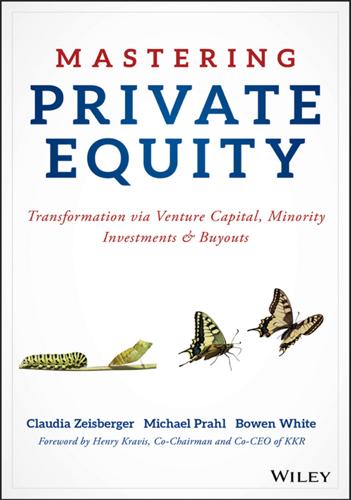
Mastering Private Equity
by
Zeisberger, Claudia,Prahl, Michael,White, Bowen
,
Michael Prahl
and
Bowen White
Published 15 Jun 2017
Vermaelen, T. (2016), Doing Good by Investing in Sin, INSEAD Knowledge, http://knowledge.insead.edu/blog/insead-blog/doing-good-by-investing-in-sin-4774. Notes 1 From a talk on Impact Investing & Marketing to the Bottom of the Pyramid, INSEAD (2016). 2 A recent INSEAD Knowledge article argued the point of a social mandate in any public equity environment (Vermaelen, 2016). 3 Despite this success, impact investment may struggle to achieve scale as the investable universe is constrained by the dual financial and social mandate. A linked challenge to institutionalizing impact investing arises from the perceived fiduciary risks and agency costs of considering non-financial returns.
…
PE firms will often require their investee companies to have adopted such polices pre-investment or include raising ESG standards as part of their improvement plans. While the focus remains on financial returns, there is an explicit and implicit belief that following an active ESG investment approach is good not only for company stakeholders, but also for investment performance by building better, more robust business. IMPACT INVESTING: Impact investment funds stand out from conventional PE funds as their mandate adds from the start a social return component to their financial return target, with an upfront intention to generate change on both dimensions. The levers and key performance indicators (KPIs) used to derive and monitor a social return are manifold and depend on the funds’ focus and industry.
…
Responsible Investment Defined Although there is no commonly accepted definition of responsible investment, we consider it to be a mandate to go beyond a narrow target of financial returns and incorporate a commitment to do good or, at a minimum, be a responsible guardian of the portfolio company and its environs. Indeed, the ways in which PE funds can implement responsible investment strategies range widely: from negative screening, to proactive ESG management strategies, to impact investment funds. The framework below (see also Exhibit 14.1) distinguishes five main approaches to investment based on the importance assigned to social returns.1 Along a sliding scale, they range from pure financial focus to pure philanthropy. Exhibit 14.1 Responsible Investment Continuum SHAREHOLDER MODEL: Traditionally, PE funds focused purely on financial return, in a clear implementation of the “shareholder model,” separating investment decisions and management of a portfolio company from wider stakeholder considerations.
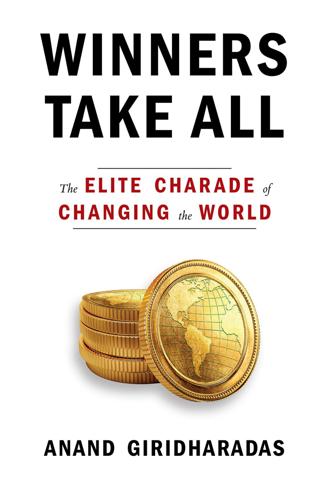
Winners Take All: The Elite Charade of Changing the World
by
Anand Giridharadas
Published 27 Aug 2018
They reflect a highly influential view that the winners of an unjust status quo—and the tools and mentalities and values that helped them win—are the secret to redressing the injustices. Those at greatest risk of being resented in an age of inequality are thereby recast as our saviors from an age of inequality. Socially minded financiers at Goldman Sachs seek to change the world through “win-win” initiatives like “green bonds” and “impact investing.” Tech companies like Uber and Airbnb cast themselves as empowering the poor by allowing them to chauffeur people around or rent out spare rooms. Management consultants and Wall Street brains seek to convince the social sector that they should guide its pursuit of greater equality by assuming board seats and leadership positions.
…
In the careerist culture that has overtaken many leading universities, productive summers that expose one to potential careers have become essential grooming for many ambitious students. Cohen pursued them. She began in 2010 with that internship on Capitol Hill, which many around her considered an old-fashioned way of learning how to make change. Starting companies and pursuing socially minded businesses like Toms Shoes or impact investment funds were more respected in her circles. While Cohen had trouble with this view, she didn’t exactly resist it either. After the Hill, she interned at an educational technology company. Then, in the summer before senior year, as Black Lives Matter was getting under way, she followed many other aspiring do-gooders to a summer job as an analyst at Goldman Sachs.
…
Win-win is a frame of mind and heart that constantly seeks mutual benefit in all human interactions. Win-win means agreements or solutions are mutually beneficial and satisfying. We both get to eat the pie, and it tastes pretty darn good! This idea fueled MarketWorld’s approach to change and the rise of such things as social enterprises, social venture capital, impact investing, benefit corporations, double and triple bottom lines, “shared value” theories of business’s enlightened self-interest, give-one-get-one products, and various other expressions of this presumed harmony between what is good for winners and good for everyone else. “Is Giving the Secret to Getting Ahead?”

Investment: A History
by
Norton Reamer
and
Jesse Downing
Published 19 Feb 2016
A second way public-private partnership can be promoted is through the expansion of impact investing. Impact investing, touched upon briefly earlier in the book in the discussion of foundations, is the deployment of capital not just for economic gain but for social advancement as well. Historically, charitable causes have benefited from a fundamental transfer of wealth from areas of high economic gain that had little or nothing to do with social benefit. For instance, an industrial magnate may build a fortune in one arena of the economy and decide in the twilight of his life to give the fortune to charity so that some aspect of civilization is improved. Impact investing changes the entire investment paradigm.
…
In other contexts, impact investing is still done at competitive rates of return either through novel structures or by pushing investors to be more creative in how or where their capital is used. It is not that impact investing with market-consistent returns is better than such investments that give up some return for increased social gain. Success does depend largely on the context. However, the ability to achieve market-consistent returns for impact investing can expand its potential enormously. Impact investing can be utilized in a wide range of scenarios. Often, this type of investing will be a plug for spaces that traditional markets have failed to serve adequately.
…
The charity thus becomes not just the recipient of capital transfers from other segments of the economy but, rather, an active recycler of capital that can be deployed and redeployed for humanitarian causes. Impact investing has been imagined and implemented in various forms. In some contexts, it is conducted with returns that are less than the market would typically bear, but the impact investor’s optimization function is now not just financial gain but also social enhancement. These forms may involve lending money at rates that are lower than one would receive from a strictly for-profit bank or receiving a share of equity capital at a price that is higher than one would get from another Conclusion 325 source. In other contexts, impact investing is still done at competitive rates of return either through novel structures or by pushing investors to be more creative in how or where their capital is used.

Smart Money: How High-Stakes Financial Innovation Is Reshaping Our WorldÑFor the Better
by
Andrew Palmer
Published 13 Apr 2015
Having arrived in Britain in the 1950s as a Jewish refugee from Egypt, he has also long worried about the gaps opening up in society between the haves and have-nots. A warning he gave in 2007 on the potential for violence as a result of rising inequality attracted a lot of public attention. Sir Ronald’s interests in entrepreneurship and social inequality came together in the field of social investment, now sometimes called “impact investing”—the allocation of capital to ventures that offer a mixture of social and financial benefits. A SIB provides this sort of blended return. Investors in the Peterborough pilot, for example, can expect a return of up to 13.5 percent if all the reoffending targets are met, nice enough but still below the returns that an investor might normally expect to make in an instrument this risky.
…
Payments to investors will come from the savings that accrue to local government from a successful placement. Britain may lead the sector, but SIBs are also being developed in places as far afield as Australia and Colombia, Canada and India. Sir Ronald has chaired a G8 task force on social-impact investment, whose report in September 2014 outlined steps that governments could take to encourage the market. SIBs may even have a role to play in the Palestinian conflict. Nothing if not ambitious, Sir Ronald is hoping to organize SIBs in Israel that would provide training and job-placement assistance for Orthodox Jews and for Arabs in that country.
…
The London homelessness bond, for example, tracks metrics in five categories in total: the number of people in the target group who are still rough sleeping; placements into accommodation; efforts to reconnect rough sleepers with their families; health issues, including emergency-room visits; and progress into work. Payments started being made to investors within a few months of the program’s launch. The setup, as Sir Ronald would recognize, is not dissimilar to the reports that private-equity investors receive on the firms owned by their funds. But the idea behind social-impact bonds, and behind impact investing in general, is not just that this is a better way of measuring outcomes. It is also that financial returns will increase the overall amount of capital available for social programs. The hard question is how far along the continuum of financial returns should you go to attract more of this capital?

Tomorrow's Capitalist: My Search for the Soul of Business
by
Alan Murray
Published 15 Dec 2022
But one of the most interesting developments of the last few years has been the steady increase in the number of investors—shareholders—who, like Larry Fink, are demanding that companies pay attention to social issues like climate change, inequality, and diversity. Between 2018 and 2020, the impact investing sector has doubled in size and by some measures now comprises as much as one in four investment dollars ($12 trillion). The reason seems obvious. The rise of impact investing has a direct correlation to the other drivers of change we’ve been describing—a massive dissatisfaction with an economic system that has left many struggling while enriching the top 1 percent, and the evolving conviction in the corporate world that a broader range of stakeholders need to be attended to. According to the Global Impact Investing Network (GIIN), there are four core characteristics of impact investing: intentionality—the desire to make a positive social or environmental impact; the expectation of a return on investment; a range of return expectations and asset classes; and ways of measuring the impact.
…
According to the Global Impact Investing Network (GIIN), there are four core characteristics of impact investing: intentionality—the desire to make a positive social or environmental impact; the expectation of a return on investment; a range of return expectations and asset classes; and ways of measuring the impact. This last one is an important characteristic that has relevance to accountability discussions around stakeholder capitalism. If you’re asking investors to buy a stake in a company that’s doing good, you have to show them that, first, it can be a healthy investment, and, second, you are responsible to your stakeholders. Without setting strong impact goals, metrics for measuring success, and regular accountability to investors, the system could not work.
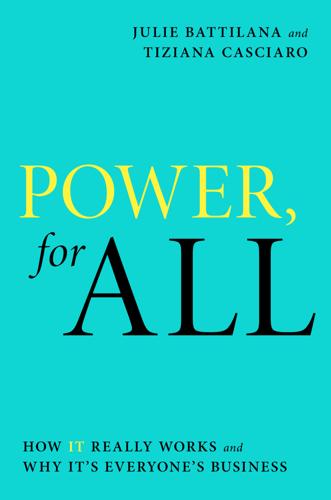
Power, for All: How It Really Works and Why It's Everyone's Business
by
Julie Battilana
and
Tiziana Casciaro
Published 30 Aug 2021
See also Mariana Mazzucato, Mission Economy: A Moonshot Guide to Changing Capitalism (Harper Business, 2021). 37 Tyler Wry, Kevin Chuah, and Michael Useem, Rigidity and Reversion: Why the Business Roundtable Faltered in the Face of COVID (Wharton School Working Paper, 2021). 38 Alnoor Ebrahim, Julie Battilana, and Johanna Mair, “The Governance of Social Enterprises: Mission Drift and Accountability Challenges in Hybrid Organizations,” Research in Organizational Behavior 34 (2014): 81–100; Julie Battilana et al., “Beyond Shareholder Value Maximization: Accounting for Financial/Social Tradeoffs in Dual Purpose Companies,” The Academy of Management Review, in press; Alnoor Ebrahim, Measuring Social Change: Performance and Accountability in a Complex World (Redwood City: Stanford Business Books, 2019). 39 Julie Battilana, Anne-Claire Pache, Metin Sengul, and Marissa Kimsey, “The Dual-Purpose Playbook,” Harvard Business Review 97, no. 4 (2019): 124–33; Julie Battilana, “Cracking the Organizational Challenge of Pursuing Joint Social and Financial Goals: Social Enterprise as a Laboratory to Understand Hybrid Organizing,” M@n@gment 21, no. 4 (2018): 1278–305; Ebrahim, Battilana, and Mair, “The Governance of Social Enterprises.” 40 Chris Marquis, Better Business: How the B Corp Movement is Remaking Capitalism (New Haven: Yale University Press, 2020). 41 Cornelia Caseau and Gilles Grolleau, “Impact Investing: Killing Two Birds with One Stone?” Financial Analysts Journal 76, no. 4 (2020): 40–52; Abhilash Mudaliar and Hannah Dithrich, “Sizing the Impact Investing Market,” Global Impact Investing Network, April 2019, https://thegiin.org/assets/Sizing%20the%20Impact%20Investing%20Market_webfile.pdf; Global Impact Investing Network, “Annual Impact Investor Survey 2020,” 10th ed., June 2020, https://thegiin.org/assets/GIIN%20Annual%20Impact%20Investor%20Survey%202020.pdf. 42 Isabelle Ferreras, Firms as Political Entities: Saving Democracy through Economic Bicameralism (Cambridge, UK: Cambridge University Press, 2017). 43 Elizabeth Anderson, “How Bosses Are (Literally) like Dictators,” Vox, July 17, 2017, https://www.vox.com/the-big-idea/2017/7/17/15973478/bosses-dictators-workplace-rights-free-markets-unions; see also Elizabeth Anderson, Private Government: How Employers Rule Our Lives (and Why We Don’t Talk about It) (Princeton, NJ: Princeton University Press, 2017), 39. 44 Isabelle Ferreras, Julie Battilana, and Dominique Méda, Le Manifeste Travail: Démocratiser, Démarchandiser, Dépolluer (Paris: Le Seuil, Paris; forthcoming in English, University of Chicago Press, 2022); Gerald Davis, “Corporate Purpose Needs Democracy,” Journal of Management Studies (2020). 45 International Labor Organization, “Who Are Domestic Workers,” International Labour Organization, accessed April 7, 2021, https://www.ilo.org/global/topics/domestic-workers/who/lang--en/index.htm. 46 Palak Shah in discussion with the authors, April and September 2019. 47 Robert Reich, “Almost 80% of U.S.

The Behavioral Investor
by
Daniel Crosby
Published 15 Feb 2018
They are as follows: Part One – An explication of the sociological, neurological and physiological impediments to sound investment decision-making. Readers will leave with an improved understanding of how externalities impact choices and may also suffer a bout of existential malaise owing to an altered belief in free will. Part Two – Coverage of the four primary psychological tendencies that impact investment behavior. Although human behavior is undoubtedly complex, in an investment context our choices are largely driven by one of these four factors. Readers will emerge with an improved understanding of their own actions, increased humility and a deepened desire to do good in the world. Part Three – Illuminates the “so what” of Parts One and Two and provides practical exercises for overcoming the problems unearthed in previous chapters.
…
In a strange twist, the very tendency that has led to human ascendancy is one of the primary culprits in investment underperformance. Homeostasis Armed with a new understanding of the bilateral relationship between mind and body, it becomes imperative for the behavioral investor to understand the very real ways in which physiological states can impact investment decision-making. Inasmuch as this construct is poorly understood and widely ignored, it represents a real source of potential outperformance for the initiated. To understand how the body impacts your financial choices you must first and foremost grasp that the primary role of the body is to maintain homeostasis.
…
We now have long lists of the ways in which we are imperfect, but little in the way of practical next steps. As research has shown, bad news without a concrete solution set can actually exacerbate the problem! Inspired by the simple elegance of Thaler’s approach, I put on my catastrophic thinking cap and set out to brainstorm every possible way someone’s behavior could negatively impact investment decision-making. I found over 117 different biases and heuristics that could lead an aspiring investor from making optimal decisions! Ouch. To make this universe more useful to investors, I looked for common psychological underpinnings among the various modes of error and grouped them accordingly.
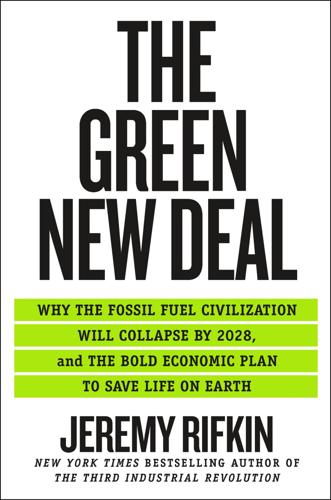
The Green New Deal: Why the Fossil Fuel Civilization Will Collapse by 2028, and the Bold Economic Plan to Save Life on Earth
by
Jeremy Rifkin
Published 9 Sep 2019
According to a report prepared by Morgan Stanley, 86 percent of millennials are interested in socially responsible investing, differentiating their cohort from its elders.1 Reflecting this emerging shift, SRI in the United States has topped $12 trillion, much of it proffered by pension fund trustees.2 Although SRIs run the gamut and can be found across every industry and sector, the deepening concerns over climate change, the environment, carbon footprint, and the geopolitical influence of Big Oil have catapulted divestments out of the fossil fuel industry and into reinvestments in renewable energies and green industries. The new thrust has given rise to “impact investing,” providing seed money to businesses that embed ESG into every aspect of their operations. In surveys conducted across the asset market sector, Morgan Stanley repeatedly heard from interviewees who expressed their strong conviction that the very nature of investment decisions is at an inflection point in the industry due to a shift in the kind of investments clients demand.
…
Morgan Stanley Institute for Sustainable Investing, Sustainable Signals: New Data from the Individual Investor, 2017, https://www.morganstanley.com/pub/content/dam/msdotcom/ideas/sustainable-signals/pdf/Sustainable_Signals_Whitepaper.pdf (accessed March 23, 2019), 1. 2. Forum for Sustainable and Responsible Investment, “Sustainable Investing Assets Reach $12 Trillion as Reported by the US SIF Foundation’s Biennial Report on US Sustainable, Responsible and Impact Investing Trends,” news release, October 31, 2018, https://www.ussif.org/files/US%20SIF%20Trends%20Report%202018%20Release.pdf (accessed February 19, 2019). 3. George Serafeim, Public Sentiment and the Price of Corporate Sustainability, Harvard Business School Working Paper 19-044, 2018, https://www.hbs.edu/faculty/Publication%20Files/19-044_a9bbfba2-55e1-4540-bda5-8411776a42ae.pdf (accessed March 4, 2019); Nadja Guenster et al., “The Economic Value of Corporate Eco-Efficiency,” European Financial Management 17, no. 4 (September 2011): 679–704, doi:10.1111/j.1468-036X.2009.00532.x; Gordon Clark, Andreas Finer, and Michael Viehs, From the Stockholder to the Stakeholder: How Sustainability Can Drive Financial Outperformance, University of Oxford and Arabesque Partners, March 2015, https://arabesque.com/research/From_the_stockholder_to_the_stakeholder_web.pdf (accessed March 24, 2019). 4.
…
See ICT/telecommunications sector Internet of Things (IoT) and aggregate energy efficiency and agriculture sector economic benefits of and Green New Deal key initiatives nodal IoT buildings oversight of sensors three converged internets of and Toronto waterfront smart city project and transportation sector investment environmental, social, and governance practices (ESG) impact investing socially responsible investment (SRI) See also investment in Third Industrial Revolution infrastructure transition; pensions investment in Third Industrial Revolution infrastructure transition building retrofits cost of initial ten-year infrastructure plan and falling cost curve of infrastructure federal investment green banks Interstate Highway System analogy and peer assembly governance Pentagon budget cuts public and private pension funds public opinion on tax credits and other incentives taxation on the super-rich termination of fossil fuel subsidies in the United States Jim Crow laws Jones, Adrian “just transition” funds Keynes, Maynard Khan, Sadiq kinship and family Korea Gas Corporation labor movement Industrial Union of Electrical Workers Machinists Union and pension funds and right-to-work laws labor movement (cont’d) United Automobile Workers (UAW) United Steelworkers land-grant public colleges and universities Lazard Leinen, Jo Lemann, Nicholas levelized cost of energy (LCOE) definition of of large solar installations of nuclear power facilities Lewis, John L.

Greater: Britain After the Storm
by
Penny Mordaunt
and
Chris Lewis
Published 19 May 2021
In recognition of this need, the Global Impact Investing Network (GIIN) was formed in 2009.69 This organisation is the global champion of impact investing, dedicated to increasing the scale and effectiveness of such investment around the world. By convening impact investors, GIIN accelerates leadership and collective action. Ultimately, it reduces barriers so more investors can allocate capital to fund solutions to the world’s most intractable challenges. It builds critical infrastructure and develops education and research that accelerate the development of a coherent, impactful investing industry. Today, Britain is seen as a source of knowledge and experience in this fledgling field of finance.
…
INDEX Acheson, Dean 1 Adebowale, Victor 1 age and government debt 1 and social mobility 1 and view of democracy 1 and voter preference 1 and voter turnout 1 Ames, Elizabeth 1 Anderson, Michael 1 apologising 1 Arctic Monkeys 1 Association of British Insurers 1 attitude, importance of 1 Audit Commission 1 Barber, Michael 1 Barry, Charles 1 Barwell, Gavin 1 BBC 1, 2, 3 Beam 1 Bell, Torsten 1 Belt and Road Initiative 1, 2, 3 Benn, Tony 1 Best Countries report 1, 2 Beveridge, William 1, 2 ‘Beyond Business Rates’ (Centre for Cities) 1 Biden, Joe 1 Big Society 1 Blair, Tony 1, 2, 3, 4, 5, 6 Blake’s 1 2 Blind Veterans UK (BVUK) 1 Blink (Gladwell) 1 Blue Peter 1 Boyle, Danny 1 Brexit see EU referendum Brit(ish) (Hirsch) 1 British characteristics apologising 1 complicated rules 1 crown of 1 double entendres 1 etiquette 1 euphemisms 1 fairness 1, 2, 3, 4, 5, 6 frugality 1 inventiveness 1 love of underdogs 1, 2, 3, 4 ‘make do and mend’ 1 nostalgia 1, 2 pluckiness 1, 2 pubs 1 queues 1 recycling 1 sense of humour 1 similarity to United States 1 sports rules 1 suspicion of sudden change 1, 2 British Election Study 1 British Medical Association (BMA) 1 British Social Attitudes Survey 1 British strengths/weaknesses celebration of 1 colonial past 1 compassion 1 constitution 1 creativity 1 environment 1 fairness 1 financial resilience 1 generosity 1 global leadership 1 health and well-being 1 international trade 1, 2 inventiveness 1 opportunity 1 potential 1 racism 1, 2 role in world 1 safety 1 social fabric 1 tracking of 1 trustworthiness 1, 2, 3 wealth 1 Brokenshire, James 1 Brook, Sam 1 Brown, Gordon 1, 2 Bubb, Stephen 1 Business Growth Fund 1 Cameron, David 1, 2, 3, 4 Camus, Albert 1 capitalism and climate change 1 and data 1 and democracy 1 efficiency of 1 forward-looking nature of 1 German model of 1 and globalisation 1 Japanese model of 1 and mutuality 1 regulation of 1 Caplin, Nick 1 Capra, Frank 1 Carry on films 1 Castañeda, Juan 1 Centre for Cities 1 Centre for Public Impact 1 Centre for Social Justice 1, 2 Centre for Towns 1 Chamorro-Premuzic, Tomas 1 charitable giving 1, 2, 3 charities 1, 2 Charities Aid Foundation 1 Charity Commission 1 Charles I, King 1, 2, 3 China authoritarianism in 1 and Belt and Road Initiative 1, 2, 3 British trade with 1 challenge to dominance 1 competitiveness of 1 comparison with United States 1 control of data in 1 debt in 1, 2 environment in 1 inequality in 1 inflation in 1 infrastructure in 1 inventiveness in 1 mistakes about 1 natural resources in 1, 2 population of 1 reasons for success 1 trustworthiness of 1, 2 view of democracy 1, 2 China Daily 1 Chorley, Matt 1 Civil Service World 1 climate change 1, 2, 3 Clinton, Hillary 1 coalition building 1 Colbert, Jean-Baptiste 1 Collier, Paul 1 Collins, Tim 1 colonial past 1 Commonwealth Fund 1 ‘Community Capital’ (Centre for Social Justice) 1 community-led regeneration 1 community-led services 1 Community Life Survey 1 compassion 1 complicated rules 1 Confederation of British Industry 1 Connolly, Billy 1 Conservative Party 1 constitution 1 Cooper, Cary 1 Cooper, Christabel 1 COP (Conference of the Parties) 1 2 Corbyn, Jeremy 1, 2 Covid pandemic and cultural change 1 and domestic violence 1 productivity during 1 and queueing 1 and social care 1 and social divisions 1 and technical change 1 Coyle, Diane 1 creative industries 1, 2, 3 Cribbins, Bernard 1 cricket 1 crime 1 Croft, David 1 Cromwell, Oliver 1 croquet 1 Crown Prosecution Service 1 cultural identities 1 Cusick, Raymond 1 D10 alliance 1, 2 Daily Telegraph 1, 2 Dalai Lama 1 Damazer, Mark 1 Damper, Carole 1 Darrow, Paul 1 data in capitalism 1 for planning 1 Davie, Tim 1 debt 1, 2 democracy 1 and age 1, 2 and capitalism 1 China’s view of 1, 2 challenges to 1 diversity of 1 and EU referendum 1, 2 and parliamentary majorities 1 and planning 1 problems with 1 support for 1 in United States 1, 2 and voter turnout 1 Department for Business, Energy and Industrial Strategy 1 Department for Education (DfE) 1 devolution of financial powers 1 disabilities 1 Doctor Who 1, 2 domestic violence 1 double entendres 1 Early Bird, The 1 EC Roberts Centre 1 economic growth 1 Economist Intelligence Unit Democracy Index 1 Economist, The 1 education 1, 2, 3 Edward the Confessor 1 Edwards, Eddie ‘The Eagle’ 1 Eisenhower, Dwight 1 elections see democracy England: An Elegy (Scruton) 1, 2 Enham Alamein 1 Entrepreneurial State, The (Mazzucat) 1 Entwhistle, George 1 environment in Britain 1 in China 1 equality and business 1 in China 1 complexity in solving 1 as continuing issue 1 gender 1, 2 and health 1 and inclusion 1 language of 1 and leadership models 1 and legal system 1 as minority issue 1 and minority perspectives 1 and modernisation 1, 2 as political issue 1 and racial discrimination 1 and social mobility 1 Equality of Experience Survey 1 etiquette 1 EU referendum bitterness of campaign 1 and democracy 1, 2 and Parliament 1, 2 as public priority 1, 2 and trustworthiness 1 fairness 1, 2, 3, 4, 5, 6, 7 Farage, Nigel 1 Fawkes, Guy 1 Federation of Small Businesses 1 Fehr, Jacqueline 1 Ferguson, Niall 1 films 1 financial resilience 1 Financial Times 1 flags as symbols 1 football 1 Forbes 1 Forbes, Steve 1 Forgotten Veterans UK (FVUK) 1 Fox, Kate 1, 2 fraud prevention 1 freedom of speech 1 frugality 1 Full English ritual 1 gender equality 1, 2 generosity 1 George, Robert P. 1 Germany 1 ‘Giving a Sense of Place’ (Charities Aid Foundation) 1 Gladwell, Malcolm 1 Global Competitiveness Index 1 Global Creativity Index 1 Global Impact Investing Network (GIIN) 1 Global Innovation Index 1 global leadership 1 Global Resilience Index 1 Goleman, Dan 1 Gomes, Renata 1 Good Life, The 1 Goodhart, David 1, 2 Goodwood Revival 1, 2, 3 government see also Parliament business culture in 1 community-led 1, 2 complexity of 1 corporate involvement in 1 debt of 1 devolution of financial powers 1 and economic growth 1 and expenditure rules 1 fraud prevention in 1 and Green Book 1 institutions of 1 and investment levels 1 local government 1 local taxation 1 and localism 1 responsibility in 1 size of 1, 2 and social value 1 state involvement 1 third sector role 1 volunteering support 1, 2 Grant, Adam 1 Green Book 1 Green Investment Bank 1 Greenway, Andrew 1 Guardian, The 1, 2, 3 Guerin, Orla 1 Halfon, Robert 1 Hayek, Friedrich 1 health 1 Hill, Benny 1 Hirsch, Afua 1 Hobson’s Choice 1 home ownership 1 homelessness 1 homophobia 1 honours system 1 HOPE Not Hate 1 household sizes 1 House of Lords 1, 2, 3 House of St Barnabas 1 How Capitalism Will Save Us (Forbes and Ames) 1 How to Run a Government: So that Citizens Benefit and Taxpayers Don’t Go Crazy (Barber) 1 Hoyle, Lindsay 1 human rights 1 Hundred Year Marathon, The (Pillsbury) 1, 2 Hutton, Barbara 1 immigration and EU referendum 1 pull factors 1, 2 inclusion 1, 2 India comparison with China 1, 2 and democracy 1 inequality see equality inflation 1 Institute of Economic Affairs 1 Institute for Fiscal Studies 1 Institute for Government (IfG) 1, 2, 3, 4 Institute on Taxation and Economic Policy (ITEP) 1, 2 Integrated Communities Action Plan 1 international trade 1, 2 inventiveness in Britain 1, 2 in China 1 investment and developing world 1 role of government 1 IQAir report 1 Isaacs, Jeremy 1 It Ain’t Half Hot, Mum 1 It’s a Wonderful Life 1 Jackson, Tim 1 Jacques, Hattie 1 James, Clive 1 James, Sid 1 Japan 1, 2 Javid, Sajid 1 Jenkins, Simon 1, 2 Johnson & Johnson 1 Johnson, Boris 1, 2 Johnson, Robert ‘Woody’ 1, 2 Jones, Carwyn 1 Joseph Rowntree Foundation 1 Kamall, Syed 1 Kendal, Felicity 1 Keynes, John Maynard 1 Kinnock, Neil 1 Labour Party 1, 2, 3, 4 leadership models 1 Lean, David 1 legal system 1, 2, 3, 4 Lester, Richard 1 Lilla, Mark 1 Little Platoons (Skelton) 1 Littlewood, Mark 1, 2 Livingstone, Ken 1, 2 local government 1 London 1, 2, 3, 4 London Eye 1 McConnell, Jack 1 McGuinness, Martin 1 Made in Scotland (Connolly) 1 Major, John 1 ‘make do and mend’ 1 Marshall, Tim 1 Martin, Fiona 1 Masty, Stephen 1 Maude, Francis 1 May, Theresa 1, 2, 3 Mazzucato, Mariana 1, 2 Meades, Jonathan 1 Meyer, Erin 1 Mill, John Stuart 1 Mitchell, Austin 1 modernisation and coalition building 1 and equality 1, 2 and ethics 1 free market system 1 honours system 1 of infrastructure 1 of institutions 1 need for 1 of Parliament 1, 2, 3, 4 as political mission 1 Money Charity 1 Mouse on the Moon, The 1, 2 Mowlam, Mo 1 Mpanga, George (George the Poet) 1 Murray, Al 1 Nagpaul, Chaand 1 National Centre for Computing Education 1 National Crime Agency 1 National Health Service (NHS) 1, 2, 3, 4, 5 national identities 1 National Literacy Trust 1 National Security and Investment Bill (2020) 1 News of the World 1 ‘No Quick Fix’ (Centre for Social Justice) 1 Northern Ireland 1, 2 Northern Powerhouse 1 nostalgia 1, 2 OECD (Organisation for Economic Cooperation and Development) 1, 2, 3, 4 Office for Civil Society 1 Office for National Statistics (ONS) 1, 2, 3, 4, 5 Olivier, Laurence 1 Olympic Games (2012) 1 Once and Future Liberal, The (Lilla) 1 One Foot in the Grave 1 Only Fools and Horses 1 Onward 1, 2 Opinions and Lifestyle Survey 1 opportunities in Britain 1 Order of the British Empire (OBE) 1 Osborne, George 1 Pagel, Christina 1 Paisley, Ian 1 Panayiotis, Michael 1 Parliament see also government and character of nation 1 diversity of MPs 1 electronic voting 1 and equality 1 expenses scandal 1 House of Lords 1, 2, 3 inefficiencies of 1 majorities in 1 and modernisation 1, 2, 3, 4 pay and privileges of MPs 1 procedure in 1 public perceptions of 1 qualifications for being an MP 1 as representative of nation 1, 2 traditions of 1 trustworthiness of 1 work of MPs 1 patriotism 1 Paxman, Jeremy 1 Perry, Jimmy 1 pessimism 1 Pick for Britain campaign 1 Pickles, Eric 1 Pillsbury, Michael 1, 2 Pinker, Steven 1 Plague, The (Camus) 1 planning and coalition building 1 data for 1 and democracy 1 and modernisation of institutions 1 and modernisation of Parliament 1 need for long-term 1, 2 tracking strengths 1 pluckiness 1, 2 police and crime commissioners (PCCs) 1 ‘Politics of Belonging’ (Onward) 1 Portcullis House 1 potential in Britain 1 poverty 1 Power to Change 1 Prescott, John 1 Prisoners of Geography (Marshall) 1 productivity 1 Prosperity Without Growth (Jackson) 1 public priorities 1 pubs 1 Pugin, Augustus 1 queues 1 Race Disparity Audit 1 Race Forward 1 racism/racial discrimination 1, 2, 3 Raffles, Stamford 1 recycling 1 refugees 1 Renke, Sam 1 responsibility in government 1 risk management and compliance 1 and trustworthiness 1 Robinson, Arnold 1 Rowling, J.

The New Harvest: Agricultural Innovation in Africa
by
Calestous Juma
Published 27 May 2017
By improving post-harvest transport and providing a steady market, Tomato Jos will substantially decrease the percentage of tomatoes lost after harvest. At scale, the company will work with 1,000 farmers, increasing their collective income by $4 million. Aldeia Nova Aldeia Nova is an agro-industrial center portfolio company investment of Vital Capital Fund, one of the world’s largest private equity impact investment funds. The company follows an agro-communal model based on the Israeli “Moshav” concept, a community-based agricultural structure that helped Israel build a modern agricultural sector, maximizing its human and natural resources.44 Aldeia Nova fuses agricultural production with service provision and social development by establishing and operating a large-scale, agro-industrial center in the Waku-Kungo region of Angola.
…
In addition, Aldeia Nova hires more than 360 direct employees who are provided training in different areas. Accounting for the scale and depth of impact, Aldeia Nova plays a great role in the revival of the area, and its impact spans throughout the country. By virtue of the economic and social impact of Aldeia Nova, the company has received a platinum rating from the Global Impact Investing Rating System, the most recognized thirdparty impact assessment. Local Innovations Local innovations represent one of Africa’s least recognized assets. For more than 20 years, India’s Honey Bee Network and Society for Research and Initiatives for Sustainable Technologies and Institutions have been scouting for innovations developed by artisans, children, farmers, women, and other community actors.
…
Babban Gona Agricultural Francise One example that illustrates the use of this approach is the Babban Gona agricultural franchise in Nigeria.52 Across the globe, successful farmer organizations have played a critical role in enabling farmers to increase their productivity and profitability. However, in Nigeria, Africa’s largest economy, despite agriculture contributing 22% to GDP and 70% to the workforce, there is a lack of strong farmer organizations that provide quality income-enhancing services to members. To address this vacuum, in 2012 Doreo Partners, a leading impact investing firm in Nigeria, launched Babban Gona (“Great Farm” in Hausa), an innovative agricultural franchise model that unlocks the power of grassroots-level leaders to operate strong farmers’ organizations. The Babban Gona agricultural franchise model is a partnership between Babban Gona (the franchisor) and a grassroots farmer organization comprising 3–10 smallholder farmers, called a “Trust-Group” (the franchisee).
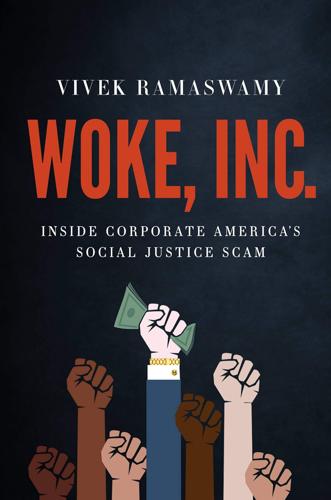
Woke, Inc: Inside Corporate America's Social Justice Scam
by
Vivek Ramaswamy
Published 16 Aug 2021
Their actions were so glaring that they invited scrutiny, which in turn empowered society to hold the bad actors accountable, either through investor skepticism in the case of Maounis (where nearly all of his investors pulled their money out of the fund) or through the courts in the case of Kozlowski (where he was convicted of fraud for duping shareholders into funding his lavish personal lifestyle). It turns out that the American system works pretty well when the American public knows exactly what to expect. Bill McGlashan partnered with one of the largest private equity firms in the world, TPG, to launch the world’s largest “impact investing” fund, but he charged lucrative fees while doing it, and in his personal life he was discreetly bribing college admissions officials to advantage his own children over less affluent, more meritorious applicants. If greed and nepotism weren’t pretty, then “social responsibility” offered the right brand of makeup.
…
It’s AstraZeneca waxing eloquent about climate change so it can secure multibillion-dollar government contracts for vaccine production. It’s State Street building feminist statues to detract attention from wage discrimination lawsuits from female employees, all the while marketing its exchange-traded fund with the ticker “SHE.” It’s Chamath Palihapitiya founding a social impact investment fund and criticizing Silicon Valley, even though he and his wealth are products of Silicon Valley, all to cover up for his prior tenure as an executive at Facebook who dreamed out loud about a private corporate military. Those companies and people use their market power to prop up woke causes as a way to accumulate greater political capital—only to later come back and cash in that political capital for more dollars.
…
Institutional Investor, 13 May 2020, www.institutionalinvestor.com/article/b1lm2j93w09cv9/ESG-Has-Failed-to-Outperform-for-Years-Is-this-a-Fix. 11. Hale, Jon. “3 Momentous Events Highlight the Impact of Investing in 2020.” Morningstar, Inc., 21 Dec. 2020, www.morningstar.com/articles/1015649/3-momentous-events-highlight-the-impact-of-investing-in-2020. 12. “2020 Report On US Sustainable, Responsible and Impact Investing Trends.” USSIF.org, The Forum for Sustainable and Responsible Investing, 2021, www.ussif.org/store_product.asp?prodid=42. 13. Collins, Sean, and Kristen Sullivan. “Advancing Environmental, Social, and Governance Investing.” Deloitte Insights, Deloitte, 20 Feb. 2020, www2.deloitte.com/us/en/insights/industry/financial-services/esg-investing-performance.html#new-esg-fund-launches-to-acceler. 14.
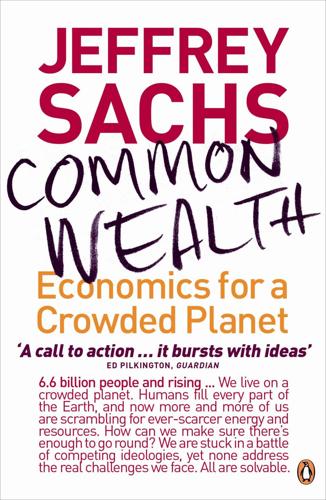
Common Wealth: Economics for a Crowded Planet
by
Jeffrey Sachs
Published 1 Jan 2008
While the benefits of increased remittance incomes for source-country economic development can be real, the remittance income will not finance the public investment needs nor more than a small part of the private investments of the developing countries. We should understand, therefore, that the imperatives for homegrown economic development in the poorer regions must continue to have center stage, with or without migration. THE MILLENNIUM VILLAGE STRATEGY The concept of quick-impact investments that help to lift disadvantaged regions from extreme poverty were at the core of the recommendations of the UN Millennium Project, which I was fortunate to direct for former UN secretary-general Kofi Annan. In each sector of the economy, including agriculture, health, education, and infrastructure, the project identified practical investments that can be readily applied, successfully monitored, and easily adapted to local conditions.
…
Indeed, as I noted earlier, it is the kind of aid that even the fierce aid critic William Easterly has recommended (when he calls for aid for “obvious goods,” such as “the vaccines, the antibiotics, the food supplements, the improved seeds, the fertilizer, the roads, the boreholes, the water pipes, the textbooks, and the nurses”). This focus on quick-impact investments was also endorsed by the world’s governments at the 2005 UN World Summit, which formally adopted the core recommendations of the UN Millennium Project. The UN Millennium Project has also moved quickly to support the implementation of its recommendations to show what can be accomplished. Hence the Millennium Village Project (MVP) was born, a program developed and led by a three-way alliance including The Earth Institute at Columbia University, Millennium Promise (an NGO devoted to promoting the MDGs), and the United Nations Development Program, and implemented by the local communities in Africa.
…
Hence the Millennium Village Project (MVP) was born, a program developed and led by a three-way alliance including The Earth Institute at Columbia University, Millennium Promise (an NGO devoted to promoting the MDGs), and the United Nations Development Program, and implemented by the local communities in Africa. The MVP draws on the financial analysis of the UN Millennium Project. A set of quick-impact investments is made in impoverished villages according to a budget that shares the burden among outside donors, the local community, NGOs, and government. The five-year effort aims to spend approximately $120 per villager per year in each community of roughly five thousand people, with the goal of empowering the community to achieve sustained long-term growth.
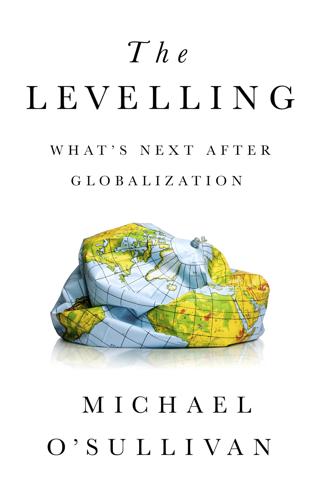
The Levelling: What’s Next After Globalization
by
Michael O’sullivan
Published 28 May 2019
One suggestion is that a small portion of Britain’s Brexit exit fee to the European Union be set aside to underwrite a Marshall Plan–type fund for Northern Ireland, which would follow the small-country model. A few examples of what this might tangibly focus on include the kind of skill-based apprentice schemes found in Austria and Switzerland, rezoning of housing from deeply politically entrenched areas using the social-impact-investing model found in Belgium, investment in cultural projects that are common to all communities (such as is done in Scandinavia and Switzerland), and the establishment of poles of excellence in certain professions, such as legal financial services. Such a fund might draw on the expertise and governance capabilities of other small states.
…
The World Bank should be drastically reduced in size and relocated to Africa, which is the one part of the world that still needs an institution like it. Being closer to the economies and societies it is supposed to serve, rather than being cosseted in Washington, will make the work of the World Bank more impactful. Having helped microfinance grow, it should support the emergence of impact investing (where investments have a social as well as a financial objective) across developed and emerging countries. The WTO should also cease to exist, given its poor performance, near irrelevance in the face of emerging trade wars, and the tendency of large poles to hammer out agreements among themselves.
…
He might also recognize the need to rebuild physical infrastructure across the United States (fast trains, sleek airports, and smooth roads) but could see that achieving that is probably just a matter of time. What might pique his curiosity are the laws and institutions that need to be built in the United States to equip it for the twenty-first century. The legal frameworks around technology, impactful investment, and equality are just some of things he might focus on. To start with, given that he was a military man, Hamilton would be impressed that America has become so mighty militarily, but, to follow his writings in the Federalist Papers, he might argue that a strong president should balance might with a sense of diplomacy, at least when relations with conventional foes are considered.
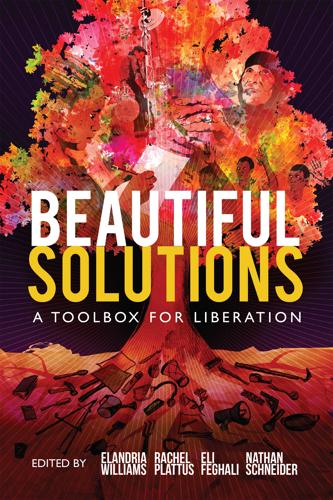
Beautiful Solutions: A Toolbox for Liberation
by
Elandria Williams, Eli Feghali, Rachel Plattus
and
Nathan Schneider
Published 15 Dec 2024
Pate is the managing director of NDN Fund, where she is responsible for the leadership, management, and growth of NDN Fund. She provides leadership in all aspects of the emerging Native CDFI. WRITTEN BY ANNIE MCSHIRAS McShiras is a fundraiser, storyteller, and business development strategist who has worked in student organizing, worker cooperative development, popular education, and impact investing, and currently serves as investment and fundraising director at the East Bay Permanent Real Estate Cooperative. More recently, a dependence on federal funds has led to what former Managing Director Nikki Pieratos, a citizen of the Bois Forte Band of Chippewa, calls a scarcity mindset. Native Nations end up competing for scarce resources from the bureaucracy of the federal government—which throughout history has opposed and undermined Indigenous sovereignty and self-determination.
…
Already, those countries and others had resisted paying the debts owed to the IMF and World Bank for decades, and audits later revealed that much of the debt was illegitimate and violated international law. WRITTEN BY ANNIE MCSHIRAS McShiras is a fundraiser, storyteller, and business development strategist who has worked in student organizing, worker cooperative development, popular education, and impact investing, and currently serves as investment and fundraising director at the East Bay Permanent Real Estate Cooperative. What does abolition mean for people and countries forced to live with the burden of debt? The urgent health and economic crisis caused by COVID-19 pushed countries in Latin America and Africa into impossible decisions: pay back debt owed to the Global North or provide healthcare for their populations.
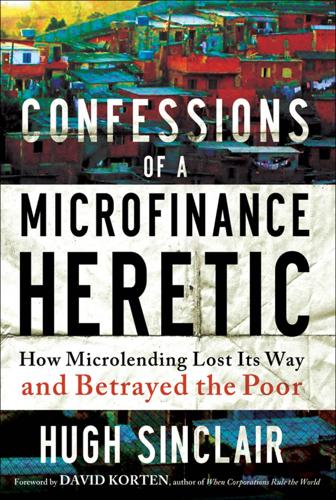
Confessions of a Microfinance Heretic
by
Hugh Sinclair
Published 4 Oct 2012
Of course, such services are not so profitable for investors, and funds cannot survive by saddling them with debt, but the poor do not only need (overpriced) credit but savings as well. The current fad is for “impact investing,” which superficially appears to offer some of the same promises of microfinance—triple-bottom-line, profitable investing. The niche is relatively young, and some of the traditional microfinance investors are entering this niche also, which is perhaps cause for alarm. I sincerely urge investors and intermediaries (such as funds) to learn some of the sobering lessons from the microfinance sector and not to build hype around overly optimistic claims that will inevitably not be met. Impact investing is unlikely to be miraculous either. I do not believe there are panaceas for poverty reduction—it is hard work and requires a number of tools used wisely and collaboratively.

Our Lives in Their Portfolios: Why Asset Managers Own the World
by
Brett Chistophers
Published 25 Apr 2023
Carswell, ‘Investment Funds Are “Having a Laugh” at Ireland’s Housing Policy – Desmond’, Irish Times, 10 October 2021. 43 P. Hosford, ‘Housing Market Needs Institutional Investors, Says Taoiseach’, Irish Examiner, 28 December 2021. 44 J. Wilmore, ‘Homes England “Keen to Hear” from Institutional Investors on Affordable Housing Opportunity’, Social Housing, 29 June 2021 – at socialhousing.co.uk. 45 Impact Investing Institute, ‘Impact Investing Institute, Property Funds Research, Homes England and the Investment Property Forum Launch Ground-Breaking Report on Social Housing Investment’, Press Release, 7 October 2021 – at impactinvest.org.uk. 46 ‘Blackstone Says Any Real Estate Deal Is Possible’, video, 8 November 2019 – at bloomberg.com. 47 A.

Prosperity Without Growth: Foundations for the Economy of Tomorrow
by
Tim Jackson
Published 8 Dec 2016
By contrast, the social benefits of more sustainable investments are almost invisible to mainstream funders who tend to look at unfamiliar portfolios and see only higher risk. The ethical basis of sustainable investment only rarely attracts a premium. But where it does, it is clearly an important source of financing for the kind of investment proposed here. Impact investing – the channelling of investment funds towards ethical, social and sustainable companies, technologies and processes – is an increasingly important element in the financial architecture. This kind of investment was in the past seen more as a form of philanthropy. But as the US-based Capital Institute has recently pointed out, it should be seen as a vital complement both to philanthropy proper and to government funding: ‘a way to leverage secure philanthropic and public sector dollars, while harnessing the power of social entrepreneurs and market-based solutions to solve some of the world’s most intractable problems’.33 At the very local level, impact investing meets another profoundly useful social innovation.
…
But as the US-based Capital Institute has recently pointed out, it should be seen as a vital complement both to philanthropy proper and to government funding: ‘a way to leverage secure philanthropic and public sector dollars, while harnessing the power of social entrepreneurs and market-based solutions to solve some of the world’s most intractable problems’.33 At the very local level, impact investing meets another profoundly useful social innovation. Community banking is a way of mobilising the savings of ordinary people at community level to provide investment funds for social or environmental finance. Community banks allow people to invest in their own community – for example, in low carbon energy, or in community amenities, and at the same time ensure that the returns from those investments remain within the community.

The Missing Billionaires: A Guide to Better Financial Decisions
by
Victor Haghani
and
James White
Published 27 Aug 2023
In any case, the utility maximization construct can handle most of these alternative objective functions based on wealth as a number rather than what wealth can be used for. A conventional Expected Utility model would not assign utility to the investment activity itself, only to the returns that flow from it. However, adjustments can be made for individuals who derive utility directly from the investing process or from control positions in investments.e Social‐impact investing can also be incorporated into the model, for those who effectively mix philanthropic activity and investing decisions. Time Preference The general human inclination for enjoyment in the present rather than in the future has long been observed and assumed by economists and philosophers, resulting in an extensive literature in economics, philosophy, and psychology on time preference.
…
Then there is all the extra value to be had by using the Expected Utility framework to figure out the decisions you should make in the real and messy world where all the main variables are uncertain, interrelated, and often non‐normal and nonlinear. The list of the decisions it can help with is long. It can help you decide how much investment risk to take for a given level of expected return and risk, how taxes and tax changes will affect how you split up your spending, how longevity and procreation uncertainty impact investment, spending, and gifting decisions, when to make intergenerational transfers, when to realize capital gains, whether to purchase annuities, and much more. Notes a. Felicity: the quality or state of being happy. b. The expression “fabric of felicity” is attributed to utilitarian Jeremy Bentham: “Nature has placed mankind under the governance of two sovereign masters, pain and pleasure… .
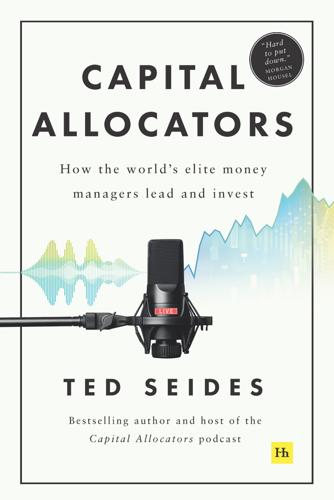
Capital Allocators: How the World’s Elite Money Managers Lead and Invest
by
Ted Seides
Published 23 Mar 2021
The movement towards sustainable investing by including environmental, social and governance (ESG) factors in the investment analysis is a pronounced change in asset management. CIOs may exclude assets that harm the environment, integrate ESG considerations as a lens in decisions, invest thematically in trends that benefit from the movement, or make impact investments intended to address sustainability directly. While overseeing the largest pension fund in the world, Japan’s Government Pension Investment Fund (GPIF), Hiro Mizuno realized that its $1.5 trillion in assets is so large that the fund necessarily owns the global portfolio. Rather than focusing his team’s efforts on achieving incremental returns above a benchmark, he focused on improving the returns for the global portfolio.
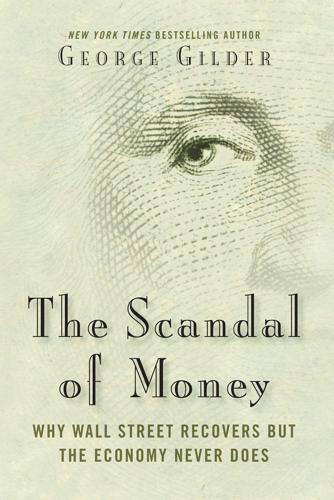
The Scandal of Money
by
George Gilder
Published 23 Feb 2016
Money is a wave phenomenon. Since the power of a wave rises with the square of its amplitude, large and long investments would be exponentially more significant than a series of small trades. Wavelets would be exponentially less potent than tsunamis. Thousands of fast trades do not add up to a program of high-impact investment for the economy. Small and temporary anomalies are unsurprising and low entropy. Profits that reflect mere leverage or borrowing power do not usually contribute to the learning process. They reveal willingness to accept a level of calculable risk rather than singularities of creative learning.
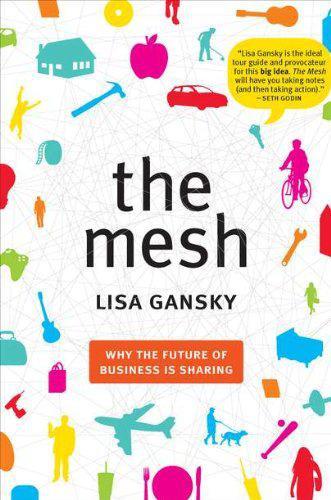
The Mesh: Why the Future of Business Is Sharing
by
Lisa Gansky
Published 14 Oct 2010
http://www.architectureforhumanity.org Catapult Design: Develops and implements human-centered products to help people in need. http://catapultdesign.org Design that Matters: Creates new products that allow socially responsible organizations in developing countries to offer improved services. http://www.designthatmatters.org Gray Ghost Ventures: Impact investment firm dedicated to providing market-based capital solutions to entrepreneurs who are addressing the needs of low-income communities. http://www.grayghostventures.com Kiva: Lending platform that aims to alleviate poverty. http://www.kiva.org Kopernik: Connecting tools and people where it is most needed.
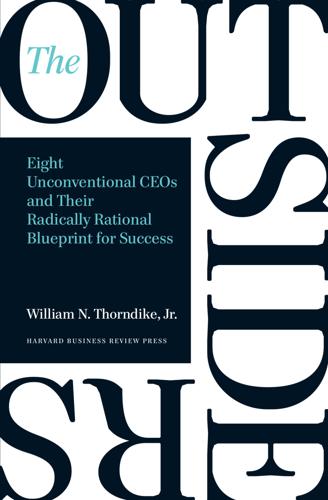
The Outsiders: Eight Unconventional CEOs and Their Radically Rational Blueprint for Success
by
William Thorndike
Published 14 Sep 2012
He is currently a director at Alta Colleges; Continental Fire & Safety Services; Carillon Assisted Living; LeMaitre Vascular; Liberty Towers; Oasis Group Ltd.; QMC International; and White Flower Farm. He is a trustee of the Stanford Business School Trust and College of the Atlantic and a member of the board of overseers at WGBH. Will is also a founding partner at FARM, a social impact investing collaborative. He lives outside of Boston with his wife and two children.

Essentialism: The Disciplined Pursuit of Less
by
Greg McKeown
Published 14 Apr 2014
Geoff was a textbook overachiever who had a deep desire to make a difference (to give some context for this, his grandfather was an early administrator in the Peace Corps). Geoff was fiercely ambitious, driven, and committed to making a contribution to the world: he was on the board of Kiva, he had been named Ernst and Young’s Entrepreneur of the Year and a Young Global Leader by the World Economic Forum, he was the co-founder of a successful impact investment fund, and he was the CEO of a global microcredit organization that was reaching more than 12 million poor families around the world. He was thirty-six years old and on top of his game. Geoff traveled constantly, which often made sleep difficult. His company was based in Seattle but had offices in San Francisco, India, and Kenya.

Survival of the Richest: Escape Fantasies of the Tech Billionaires
by
Douglas Rushkoff
Published 7 Sep 2022
First, we are to liberate capital from all regulatory encumbrances—stuff like taxation, protection for local industries, and, worst of all, nationalization. Instead of forcing corporations to address global problems or taxing their winnings to do it on a national level, we are supposed to encourage their voluntary “impact investing” and support their emerging spirit of “corporate global citizenship.” Thus empowered, the planet’s wealthiest leaders can make good decisions from the top down. This subjects our future welfare to the whims of wealthy individuals who believe they know best. It doesn’t lead to good outcomes.

What If We Get It Right?: Visions of Climate Futures
by
Ayana Elizabeth Johnson
Published 17 Sep 2024
.[*103] And there are a lot of very wealthy people who have what is termed a “family office,” a team to manage and invest their assets. If money + strategy = power, many of them have it in spades. So, how can we insert climate into those strategies? How can they unleash their capital in useful ways? Enter investor education and impact investing. Back in 2012, Régine Clément was serving as the trade commissioner and head of energy and environment at the Canadian Consulate General in New York City. She was running a clean tech accelerator program and noticed that some of the participating entrepreneurs, those funded by family offices, were able to continue to raise capital in the challenging years following the 2008 financial crisis.
…
For example, the Islamic approach to investing with Sharia principles supports the idea that, yes, you invest to provide returns, but you do it in a way that doesn’t create harm in other spheres. And we see the use of exclusions for arms dealing and tobacco as a common practice in Western societies. The creation of impact investing, and trying to find ways to tackle climate and social outcomes in an integrated way, is an expansion of these approaches. Ayana: You’ve said previously that “the challenge of climate change is perhaps best defined as our challenge to end destructive capitalism.” You’ve talked about capitalism as amoral, and said there are lots of different versions of it we could have, lots of different guardrails or moral stances we could imbue it with, but that fundamentally it’s a tool.

What's Yours Is Mine: Against the Sharing Economy
by
Tom Slee
Published 18 Nov 2015
However, internal documents obtained by the Associated Press, as well as interviews with more than a dozen current and former employees, independent researchers, and videotaped testimony from the families of the dead, show top SKS officials had information implicating company employees in some of the suicides. Sinclair concludes that “Frankly, I think the only means to rein in these groups is to formally regulate them.” 38 He also notes that “Impact Investing,” which is the Omidyar Network’s current emphasis, has similar problems: “I do not believe there are panaceas for poverty reduction—it is hard work and requires a number of tools used wisely and collaboratively.” 39 As sharing and commerce have conflicting goals, using markets to scale up social action can destroy the very thing that made it special in the first place.

Designing Your Life: How to Build a Well-Lived, Joyful Life
by
Bill Burnett
and
Dave Evans
Published 12 Sep 2016
Use the Internet not to get online job listings but to find and reach out to the people whose stories you want to hear. Bella, one of our students who graduated a few years ago, just called to tell us how happy she was, and how well this approach had worked for her. She had successfully figured out what she wanted to do (impact investing in the developing world) and designed her way to three great offers in that field including the one she accepted with a boutique firm she’d never heard of before—and it only took two hundred conversations to do it. Two hundred. In just six months. Really. Bella reported that she was able to find and reach out to well over half of those two hundred by using Google and LinkedIn.
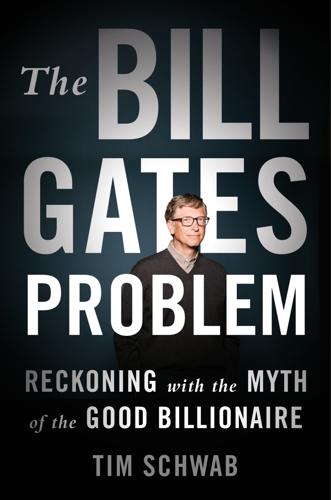
The Bill Gates Problem: Reckoning With the Myth of the Good Billionaire
by
Tim Schwab
Published 13 Nov 2023
Federal Advisory Committee Database, Advisory Committee on Tax Exempt and Government Entities, Committee Detail, https://www.facadatabase.gov/FACA/apex/FACAPublicCommittee?id=a10t0000002ondOAAQ; “Steps to Catalyze Private Foundation Impact Investing,” The White House, April 21, 2016, https://obamawhitehouse.archives.gov/blog/2016/04/21/steps-catalyze-private-foundation-impact-investing. investigation of corporate tax avoidance: Jennifer Liberto, “Offshore Tax Havens Saved Microsoft $7 Billion in Taxes—Senate Panel,” CNN Business, September 20, 2012, https://money.cnn.com/2012/09/20/technology/offshore-tax-havens/index.html; “Subcommittee Hearing to Examine Billions of Dollars in U.S.

Two and Twenty: How the Masters of Private Equity Always Win
by
Sachin Khajuria
Published 13 Jun 2022
Partners can be worth hundreds of millions of dollars, with the founders worth billions. It’s much rarer to find that in a bank or a law firm. Lateral hires are rare, but they are becoming more common as private equity firms have grown and are venturing into new areas. For example, a firm that has never before invested in social impact investing or infrastructure or renewable energy or life sciences might create a team for each such vertical, recruiting laterally on the understanding that the members of the new team will work alongside a long-standing partner of the firm to ensure cultural continuity and a common approach to making investments.

Investment Banking: Valuation, Leveraged Buyouts, and Mergers and Acquisitions
by
Joshua Rosenbaum
,
Joshua Pearl
and
Joseph R. Perella
Published 18 May 2009
Boston: Harvard Business School Press, 2001. Carney, William J. Corporate Finance: Principles and Practice. New York: Foundation Press, 2004. Carney, William J. Mergers and Acquisitions: Case and Materials. New York: Foundation Press, 2000. Chava, Sudheer, and Michael R. Roberts. “How Does Financing Impact Investment? The Role of Debt Covenants.” Journal of Finance 63 (2008): 2085-2121. Chisholm, Andrew. An Introduction to Capital Markets: Products, Strategies, Participants . West Sussex, UK: John Wiley & Sons, 2002. Clements, Philip J., and Philip W. Wisler. The Standard & Poor’s Guide to Fairness Opinions.

The Alpha Masters: Unlocking the Genius of the World's Top Hedge Funds
by
Maneet Ahuja
,
Myron Scholes
and
Mohamed El-Erian
Published 29 May 2012
The statements are made based on such views as they exist as of the date of this publication. Such views are subject to change without notice based on numerous factors, such as further analyses conducted by the portfolio managers of the respective Funds, and changes in economic, market, political and other conditions that may impact investment opportunities. There is no assurance that such views are correct or will prove, with the passage of time, to be correct. No representations or warranties, express or implied, are made as to the accuracy or completeness of information in this book obtained from third parties. The information contained herein may change at any time without notice and there is no duty to update the person or firm to whom this information is provided.
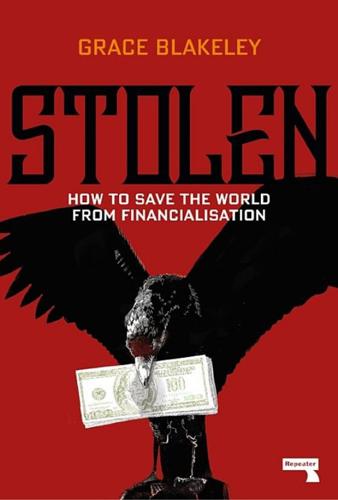
Stolen: How to Save the World From Financialisation
by
Grace Blakeley
Published 9 Sep 2019
As more “merge and monopolise” activity takes place, the monopolies themselves become ever more powerful. Gaining a greater market share means increasing profitability, which facilitates even greater M&A activity, creating a self-reinforcing cycle that has led to the emergence of the biggest global monopolies in history. Second, these firms are investing in financial markets. Monopolisation impacts investment in fixed capital because firms find it more profitable to restrict production and invest the proceeds in financial markets.56 They distribute large sums to shareholders, but even that doesn’t exhaust their cash piles. Instead, they reinvest their profits into other assets — making these firms similar to the institutional investors that have been so important to the development of financialisation.57 This trend can be measured by looking at the extent to which corporations’ holdings of financial assets have increased since the 1980s.
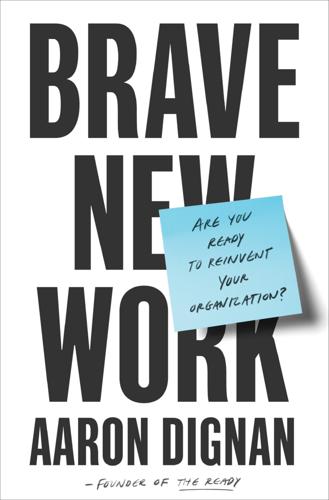
Brave New Work: Are You Ready to Reinvent Your Organization?
by
Aaron Dignan
Published 1 Feb 2019
Unsurprisingly, these experiments were quickly shuttered by the governments presiding over the recessions that triggered them. In this century, for new forms of incorporation that prioritize purpose and public benefit to work, we need new investors and investment vehicles that align with our values. Rising to meet that challenge, impact investing reflects a growing desire among investors to generate returns through investments that provide a public benefit. As concepts such as corporate social responsibility and triple bottom line (social, environmental, economic) have become more well known, the market has grown into a $250 billion industry on its way to half a trillion or more in the next decade.
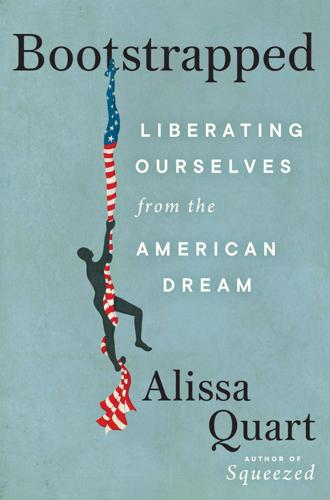
Bootstrapped: Liberating Ourselves From the American Dream
by
Alissa Quart
Published 14 Mar 2023
What Prince has been offering is worthy, although perhaps a weaker structural reimagining than we might wish to see. After all, just hoping the wealthiest will start to think differently is not enough—we don’t just need better multimillionaires to correct our social problems with their occasional impact investing or GivingTuesdays. Yet sadly, envisioning a broader view of society while still existing within this milieu is an accomplishment. Many of the richest today are not even attempting to be as helpful or as self-aware as Prince, or even sustaining a noblesse oblige pose. They may instead tend to welcome the fact that the game is rigged in their favor.
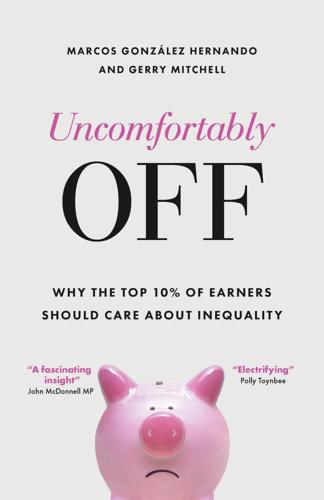
Uncomfortably Off: Why the Top 10% of Earners Should Care About Inequality
by
Marcos González Hernando
and
Gerry Mitchell
Published 23 May 2023
James Perry November 2022 James is co-Chair of COOK (www.cookfood.net), a certified B Corp since 2013. He co-founded the B Corp movement in the UK (www.bcorporation.uk), and serves on the global board of B Lab and the board of B Lab Europe. He is also a member of Patriotic Millionaires UK, a founding partner of Snowball (www. snowball.im) and a multi-asset impact investment manager. xii Introduction: Why bother with the well-off? Three weeks before the UK’s 2019 general election, a middleaged man spoke up among the audience on BBC Question Time and briefly became a minor celebrity. Clearly angry, Rob Barber, an IT consultant from Lancashire, said that the Labour Party was lying to the public by claiming that people like him wouldn’t be taxed more by a Labour government: “You are not going after the billionaires, you’re going after the employees because it’s easy money and I have no choice because it’s PAYE [pay as you earn].
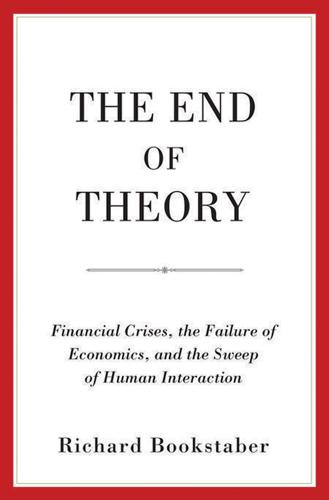
The End of Theory: Financial Crises, the Failure of Economics, and the Sweep of Human Interaction
by
Richard Bookstaber
Published 1 May 2017
John von Neumann, in addition to the roles I have already mentioned in developing game theory and conceptualizing replicating machines, and in addition to his foundational work in mathematics, physics, computer science, and economics, also was central in this effort. 2. This fits within an emerging interest among the socially minded in the financial community called impact investing, in which investments are made with an eye toward profits but also with an objective of social returns. REFERENCES Acemoglu, Daron, Asuman Ozdaglar, and Alireza Tahbaz-Salehi. 2015. “Systemic Risk and Stability in Financial Networks.” American Economic Review 105, no. 2: 564–608. doi: 10.3386/w18727.
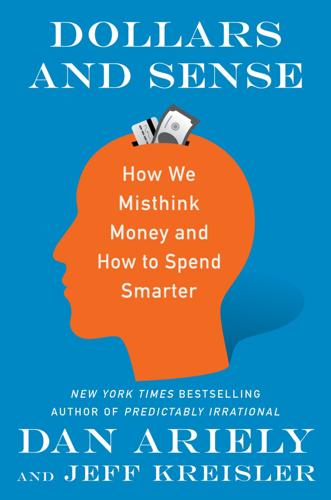
Dollars and Sense: How We Misthink Money and How to Spend Smarter
by
Dr. Dan Ariely
and
Jeff Kreisler
Published 7 Nov 2017
Once we understand loss aversion and that many things can be framed as either gains or losses—and that the loss framework is more motivating—maybe we can reframe choices, such as how much to contribute to retirement savings, in a way that will persuade us to act in ways that are more consistent with our long-term well-being. Speaking of long-term well-being, loss aversion also clouds our ability to gauge long-term risks. This problem specifically impacts investment planning. When risk is involved and the amount of our investment fluctuates up and down, we have a hard time seeing beyond our potential immediate losses to imagine future gains. Over the long term, stocks outperform bonds by a large margin. But when we just look at the short term, there will be many short periods with painful losses.

Shocks, Crises, and False Alarms: How to Assess True Macroeconomic Risk
by
Philipp Carlsson-Szlezak
and
Paul Swartz
Published 8 Jul 2024
More investment will be needed to keep the existing capital stock steady. It is a separate, but complementary, argument that when the capital stock is large, the benefits of growing the capital stock diminish. The first city airport has greater impact than the third. While new generations of technology can provide new opportunities to invest, the highest-impact investments have likely already been made.7 Second, not only is the capital stock larger, but its modern composition also depreciates faster (figure 5.6). Today’s investments are more often in intellectual property (IP—think software) and less often in structures (think buildings) and equipment than in the past.
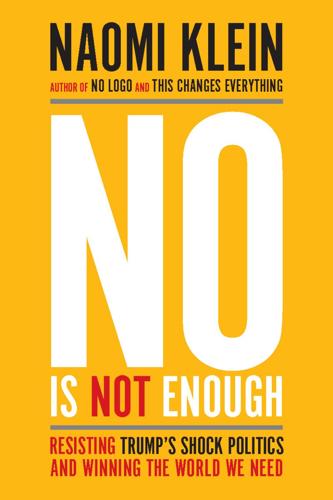
No Is Not Enough: Resisting Trump’s Shock Politics and Winning the World We Need
by
Naomi Klein
Published 12 Jun 2017
As of this writing, Donald Trump has appointed five current or former Goldman Sachs executives to senior roles in his administration, including Steve Mnuchin as Treasury secretary, James Donovan (formerly a Goldman Sachs managing director) as deputy Treasury secretary, Gary Cohn (formerly Goldman’s chief operating officer) as director of the White House National Economic Council, and Dina Powell (formerly Goldman’s head of impact investing) as the White House senior counselor for economic initiatives. Even Steve Bannon once worked at Goldman. And that’s not counting Trump’s pick to lead the Securities and Exchange Commission, Jay Clayton, who served as Goldman’s lawyer on multibillion-dollar deals, and whose wife is a wealth manager with the company.
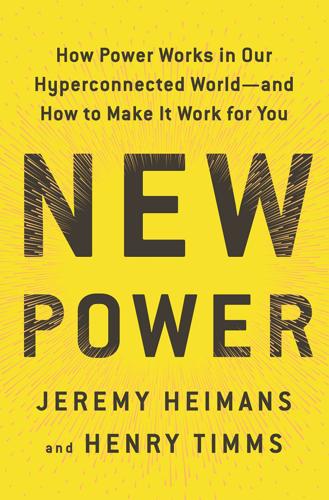
New Power: How Power Works in Our Hyperconnected World--And How to Make It Work for You
by
Jeremy Heimans
and
Henry Timms
Published 2 Apr 2018
As a donor to Oxfam, for example, you don’t expect a financial return on your contribution, or really anything other than the intangible benefit of knowing you are helping people (and, in some cases, being recognized for having done it, like having your name listed as a patron). This kind of spending offers, above all, a sense of higher purpose. In recent years, we’ve seen these two kinds of returns—the economic and the altruistic—being blended more and more often. Think of impact investing, which promises investors they can make good returns and do a little good for the world. Or think of the countless brands that promote themselves as causes—Patagonia, Toms, or Warby Parker, for example. This isn’t a new phenomenon—for years, public television has incentivized donations with the promise of free swag—but today it is becoming much more mainstream.

Reimagining Capitalism in a World on Fire
by
Rebecca Henderson
Published 27 Apr 2020
The sixty-four thousand dollar question is whether these kinds of investors—investors who value the well-being of the planet over squeezing the maximum possible returns from their money—are a fringe group operating at the margins or the wave of the future. I don’t think we yet know the answer. But I am hopeful. About $68 trillion of wealth is expected to change hands in the next twenty-five years as the baby boomers die, and much of this wealth will be given to a younger generation that is much more interested in impact investing than their parents were.56 Another route to securing investors committed to the long term is to raise capital from customers or employees. Triodos Bank’s success, for example, is critically dependent on the fact that it is owned by its customers—customers who choose to own the bank because they share its mission and values and are committed to its long-term success.

The Golden Passport: Harvard Business School, the Limits of Capitalism, and the Moral Failure of the MBA Elite
by
Duff McDonald
Published 24 Apr 2017
The claim that we live in a free market is a crock. What we have is free subsidies and implicit unstated monopolies and collaborative action in oligopolistic situations. It’s heading us toward a cliff with respect to hydrocarbon energy.” In an essay he wrote describing the mandate of NewWorld, “Impact Investing: Trading Up, Not Trading Off,” Bales concludes: “Without changing the behavior of Corporate America, there is little prospect of curing certain environmental problems and many other societal ills.” Can HBS lead the way in that regard? It’s not going to happen until the faculty helps eliminate the ideological divide that the School helped create between business and government.
…
“Bill” Heinz, John and Teresa, 560 Henderson, Bruce, 207, 417 Henderson, Ernie, 179 Henderson, James, 128 Henderson, Lawrence J., 81–82, 84, 111, 355 Henderson, Rebecca, 238 Henry, James, 406–7 Hersum, Anita, 279 Hertz, John D., 123 Herzlinger, Regina, 238, 573 Hewlett-Packard, 241, 321, 322, 460, 531, 563 Higdon, Hal, 512 Higgins, Bob, 332 Higher Learning in America, The (Veblen), 95 Hill, Linda, 238, 314, 557–58 Hitch, Charles, 272 Hoagland, Ralph, 128 Holmes, Oliver Wendell, Sr., 25 Homans, George, 308 Hoopes, James, 14, 31, 3, 882, 114, 315, 317, 523 Hoover, Herbert, 101 Hosmer, Windsor, 326 Hostetter, Amos, Jr., 323 Hotta, Shozo, 205–6 “How Business Schools Lost Their Way” (Bennis and O’Toole), 224 “How Competitive Forces Shape Strategy” (Porter), 414 How Harvard Rules (Trumpbour), 432 Hubbard, Glenn, 405 Human Problems of an Industrial Civilization, The (Mayo), 88, 90 human relations movement, 37, 81–90, 93, 118, 286, 355 human resources movement, 61, 197–98 Huston, Darren, 531 IBM, 142, 209, 289, 301, 347; HBS grads hired by, 460; HBS partnership with, 154–55; HBS’s Executive Education and, 151; HBS’s MBAs required to buy computers and, 155; Kanter and, 404; layoffs at, 404, 492–93 Icahn, Carl, 367, 480, 481 Ignatius, Adi, 306 Iksil, Bruno (London Whale), 472, 548 Immelt, Jeffrey, 305, 531 “Impact Investing: Trading Up, Not Trading Off” (Bales), 7 INCADIS (Individual Case Discussion Simulator), 287 income inequality, 5, 10, 23, 56, 390, 426, 510, 539, 540–41; CEO compensation and, 165–66, 539, 544; concentration of wealth, 539; stock market and, 491; submerged state and, 542; wage stagnation and, 165, 426, 491 “Income Inequality in the United States, 1913–1998” (Saez), 540 India: business education in, 231, 233; Satyam Computer Services fraud, 408–9, 521 Indian Institute of Management–Ahmedabad, 230, 231, 236, 564–65 India Research Center, 234, 545 Individualized Corporation, The (Ghosal and Bartlett), 491 Industrial Bank of Japan, 153–54; endowment of HBS professorship, 153, 402 industrial organization (IO), 412–13 industrial psychology, 84–86 innovation, 557–58; disruptive, 303, 409, 422, 424, 572, 573; Doriot and wartime, 124; founder-inventors and, 60; MBAs and, 120–21; MBAs in Silicon Valley and, 10.
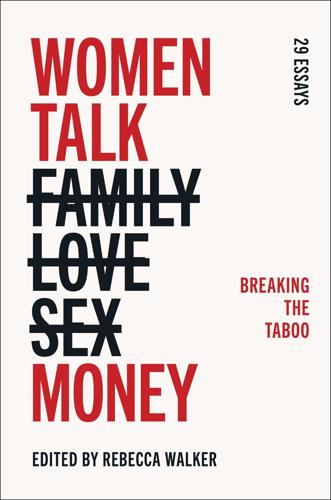
Women Talk Money: Breaking the Taboo
by
Rebecca Walker
Published 15 Mar 2022
As a founder, she was backed by top Silicon Valley investors and built partnerships with some of the world’s largest technology, travel, and media companies. Jamie has been named a Forbes “Up-and-Comer,” a Business Insider “Top Founder to Watch,” and a Huffington Post “Top 50 Non-Technical Founder in Technology.” As a thought leader in social justice, impact investing, and entrepreneurship, Jamie has appeared on major networks, such as CBS, BBC, CNN, and Bloomberg, and her writing has appeared in several publications, including Fast Company, Entrepreneur, and The End of The Golden Gate, an anthology published by Chronicle Books. Jamie was a producer for The Daily Show with Jon Stewart, Michael Moore, Sundance Channel, and PBS’s Frontline and has worked for leading social justice organizations, including the NAACP Legal Defense and Educational Fund, Dream Corps, American Jewish World Service, and Action Against Hunger.

The Future Is Faster Than You Think: How Converging Technologies Are Transforming Business, Industries, and Our Lives
by
Peter H. Diamandis
and
Steven Kotler
Published 28 Jan 2020
Technically a mobile wallet, Good Money lives on your phone and holds both regular and crypto currencies. It can be used at any ATM, with zero annual fees, no ATM charges, and an interest rate a hundred times larger than most banks. Customers also become owners. Put money into Good Money and you get an equity share in return, while the company funnels 50 percent of their profits into impact investments and charitable donations. With this strategy, Good Money is targeting people who prefer value-driven companies, and the 40 million Americans who have been driven out of the traditional banking system by overdraft fees and blackball lists. But the largest mobile market is a third category entirely, the unbanked, those without any place to store their money.
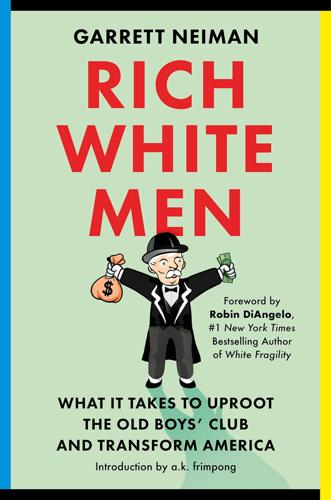
Rich White Men: What It Takes to Uproot the Old Boys' Club and Transform America
by
Garrett Neiman
Published 19 Jun 2023
Robust community investment is expensive, and many of the rich white men who bankroll political campaigns consider it too expensive, which is among the reasons why resources arrived through the back door of a charitable initiative. Charity offers rich white men a way to do some good at a fraction of the cost of community investment, cleansing our consciences and names without diminishing our wealth or power. My sense is that impact investing is all the rage in part because it is a way for rich white men to feel and claim to be doing good while still getting richer, just less quickly. Part of the reason why such a competitive culture permeates throughout the nonprofit sector is that nonprofit organizations fight for scraps thrown to them by rich white men.
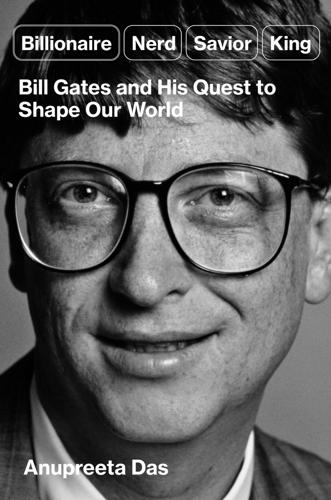
Billionaire, Nerd, Savior, King: Bill Gates and His Quest to Shape Our World
by
Anupreeta Das
Published 12 Aug 2024
At the time, Microsoft said it did not discriminate on pay based on gender.5 In 2019, the news website Quartz reported about an email chain between female Microsoft employees complaining about sexual harassment and discrimination.6 Women felt systematically undervalued and underpaid, according to the emails. Two years later, after the divorce, news reports about Gates’s behavior when he was at Microsoft—including at least one affair with an employee—added to questions about the company’s culture and values. Natasha Lamb, a founding partner at an impact investment firm called Arjuna Capital, had been paying attention to the accusations of sexual harassment and gender and pay discrimination at Microsoft. Arjuna, which takes its name from the warrior-hero in the Mahabharata, invests in companies with an eye to their performance on environmental, social, and governance (ESG) issues.

Super Pumped: The Battle for Uber
by
Mike Isaac
Published 2 Sep 2019
Every new negative press story chipped away at Uber’s valuation, which tarnished Bill Gurley’s incredible play, and meant less money in the end for shareholders. Some investors were turning on the company publicly. Mitch Kapor and his wife, Freada Kapor Klein, both early investors in Uber, had long been active in so-called “impact investing,” a socially conscious approach to capitalism. “We feel we have hit a dead end in trying to influence the company quietly from the inside.” the two wrote in a public blog post. “We are speaking out publicly, because we believe Uber’s investors and board will rightly be judged by their action or inaction.

The Future Is Asian
by
Parag Khanna
Published 5 Feb 2019
Both Alibaba’s and Tencent’s foundations have set up websites for the donation of discarded mobile phones and desktop computers, together raising hundreds of millions of dollars for local technology distribution programs. Tencent “charity boxes” in stores and airports have payment platforms that allow donations of less than $1 using its popular e-payment system. Zakat, too, has gone digital: an online UNHCR appeal that ran during Ramadan in 2013 raised $700 per donor. Impact investment has become a major new thrust of Asian philanthropists. The Emirates Foundation, the Arab Foundations Forum, and Islamic Development Bank have all raised funds and directed them toward social enterprises delivering innovative health care models, both alone and with Western partners such as the Bill & Melinda Gates Foundation’s Lives and Livelihoods Fund, a $2.5 billion initiative to combat illnesses such as polio and river blindness, which has become the largest such fund based in the Arab world.
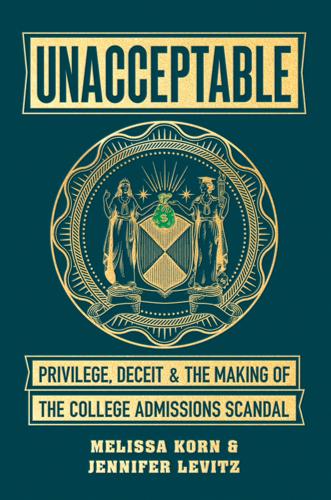
Unacceptable: Privilege, Deceit & the Making of the College Admissions Scandal
by
Melissa Korn
and
Jennifer Levitz
Published 20 Jul 2020
Huneeus, who ran Huneeus Vintners, a Napa Valley wine dynasty started by his father, had been a high-maintenance client for Singer: demanding, cocky, and concerned that other, wealthier clients were getting more attention. And now here Huneeus was on the phone with Singer in late August 2018, demanding intel on others in his parent group—chief among them McGlashan, the founder of the $13.2 billion growth and $3 billion social impact investment arm of private equity firm TPG Capital in San Francisco. Singer was pissed. It was part of his business model, of course, that many clients were going to know one another. Word-of-mouth referrals were his lifeblood. Robert Zangrillo, a Miami developer and investor, introduced Singer to Robert Flaxman, a Beverly Hills developer, in 2015, the same year that Atherton mom Elizabeth Henriquez passed his name to Davina Isackson.

Investing Amid Low Expected Returns: Making the Most When Markets Offer the Least
by
Antti Ilmanen
Published 24 Feb 2022
All these assets do not focus on ESG, but by any measure the asset growth has been phenomenal. Climate change concerns have been a game-changer. ESG investing is an umbrella term that various people may interpret very differently. Even the umbrella term is debated, as ESG is almost interchangeably called responsible or sustainable or impact investing, or corporate social responsibility. Possible approaches range from excluding sinful companies to actively engaging with the same companies to change their behavior. In most cases, investments are evaluated not just on financial considerations but also through the ESG lens. While some aspects of ESG may also enrich expected return or risk forecasts and improve a portfolio's risk/return trade-off, many ESG-sensitive investors will choose to have “more ESG” in their process than would be optimal for strictly financial reasons.
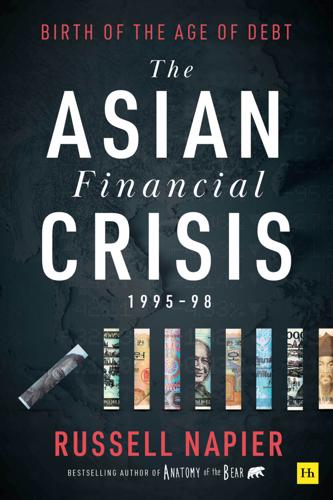
The Asian Financial Crisis 1995–98: Birth of the Age of Debt
by
Russell Napier
Published 19 Jul 2021
This forced almost all these investors to pay huge attention to the composition of this index when they allocated their capital to what was called Asia, but was actually a small section of what any layperson would call Asia. When I wrote about this in May 1996, I called it “the tyranny of benchmarks” and that is a phrase that seems to have stuck as a description of how it impacts investment decisions. What made it into this index and what weightings determined what investors called the Asian equity ‘asset class’? This asset class comprised equities of some of the world’s poorest countries, but also some of the world’s richest. It spread from Pakistan in the west to South Korea in the east, and from China in the north to Indonesia in the south.
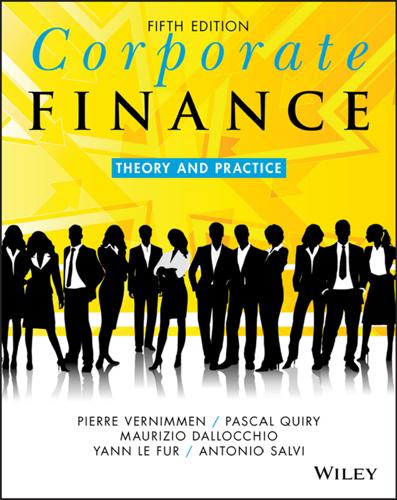
Corporate Finance: Theory and Practice
by
Pierre Vernimmen
,
Pascal Quiry
,
Maurizio Dallocchio
,
Yann le Fur
and
Antonio Salvi
Published 16 Oct 2017
Koedijk, Capital structure policies in Europe: Some evidence, Journal of Banking and Finance, 30(5), 1409–1422, May 2006. M. Campello, Capital structure and product market interactions: Evidence from business cycles, Journal of Financial Economics, 68(3), 353–378, June 2003. S. Chava, M. Roberts, How does financing impact investment? The role of debt covenants, Journal of Finance, 63(5), 2085–2121, October 2008. D. Chew et al., Stern Stewart roundtable on capital structure and stock repurchase, in J. Stern and D. Chew (eds), The Revolution in Corporate Finance, 4th edn, Blackwell Publishing, 2003. H. DeAngelo, R. Roll, How stable are corporate capital structures?
…
Palazzo, Cash holdings, risk and expected returns, Journal of Financial Economics, 104(1), 162–185, April 2012. On covenants: K. Bhanot, A. Mello, Should corporate debt include a rating trigger?, Journal of Financial Economics, 79(1), 69–98, January 2006. S. Chava, M. Roberts, How does financing impact investment? The role of debt covenants, Journal of Finance, 63(5), 2085–2121, October 2008. G. Nini, D. Smith, A. Sufi, Creditor control rights, corporate governance and firm value, Review of Financial Studies, 25(6), 1713–1761, June 2012. C. Smith, J. Warner, On financial contracting: Analysis of bond covenants, Journal of Financial Economics, 7(2), 117–161, June 1979.